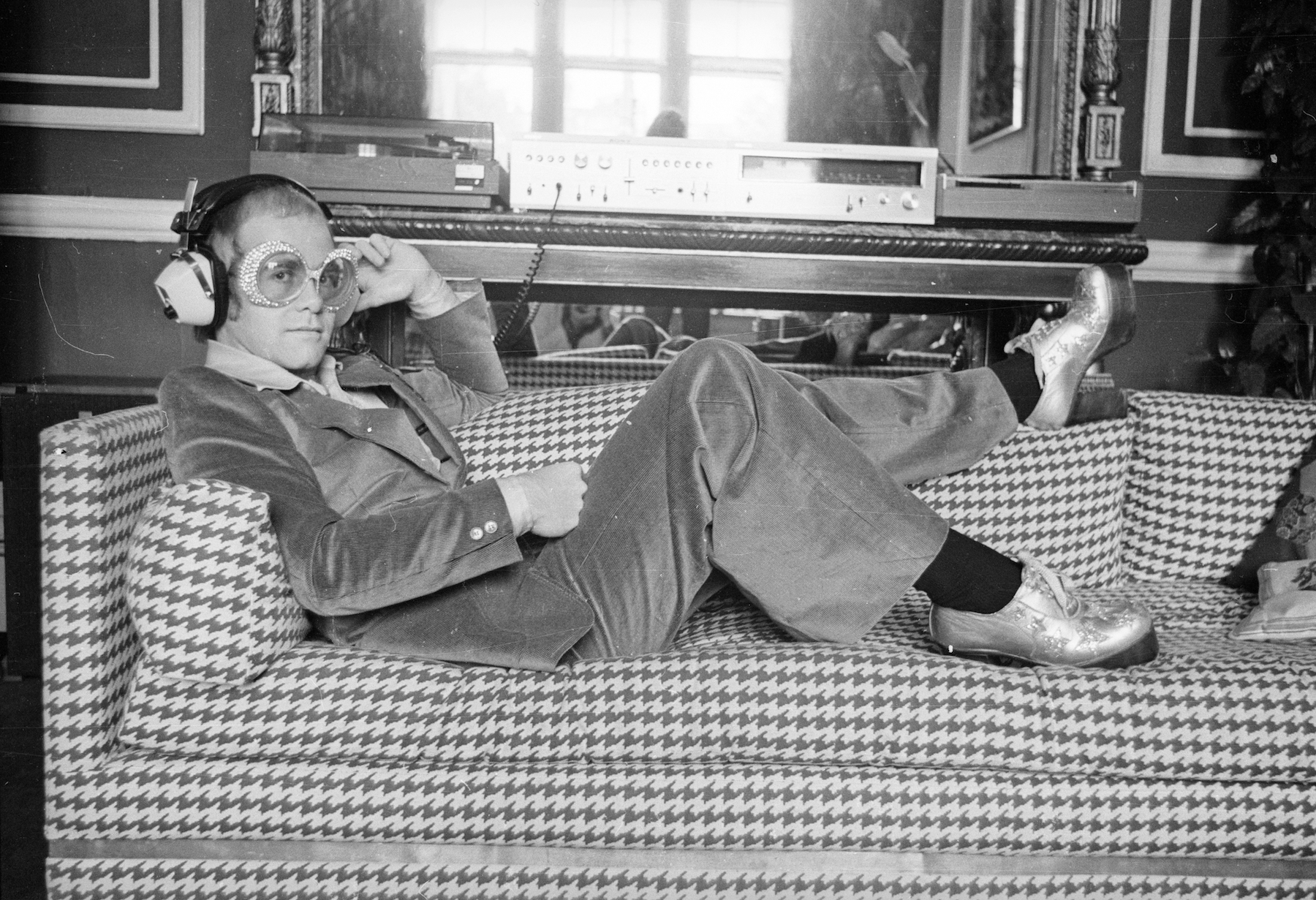
Reginald Kenneth Dwight was a 20-year-old session musician when he applied for a job at a London record label, and was paired up with a lyricist named Bernie Taupin in 1967. Dwight adopted the stage name Elton John as a combination of the names of two members of his band Bluesology, and released his first album of songs written with Taupin, Empty Sky, to little fanfare in 1969. Over the next decade, they became one of the most successful writing teams in popular music, with John selling millions of albums and topping the charts with singles like “Rocket Man” and “Bennie and the Jets.”
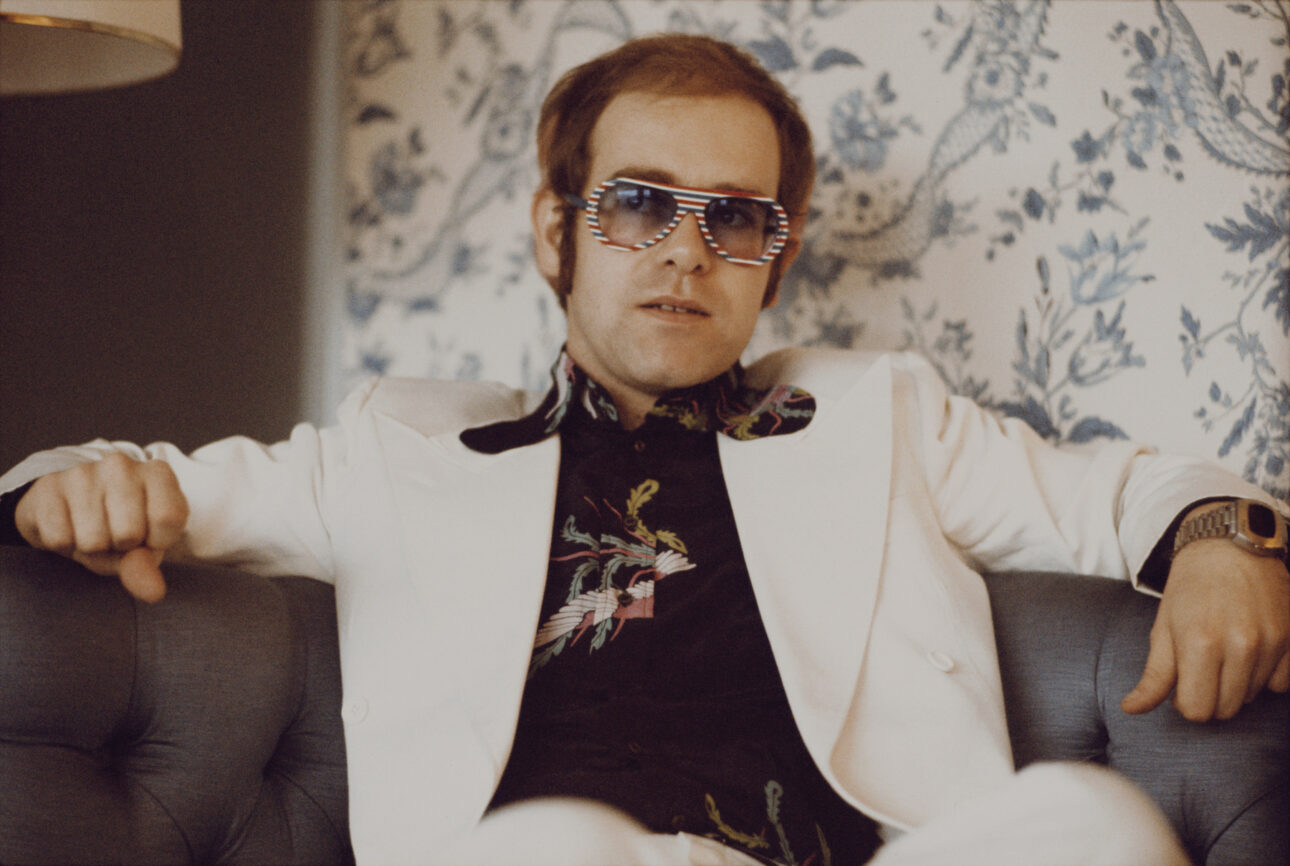
Although songwriting teams with a strict division of labor between a lyricist and a melodist have a long history on Broadway and Tin Pan Alley, John and Taupin’s collaborative relationship is unusual in contemporary pop. Taupin writes a complete set of lyrics, sometimes based on his own life or John’s and sometimes with more obscure inspirations, and then John sits at his piano and turns those words into boldly tuneful pop songs, later performing them in arenas and stadiums in wildly over-the-top costumes.
More from Spin:
- The Prodigy Is Finding Its Second Life
- RIP Blondie’s Clem Burke, Gang Of Four’s Dave Allen
- The SPIN Interview: Youssou N’Dour
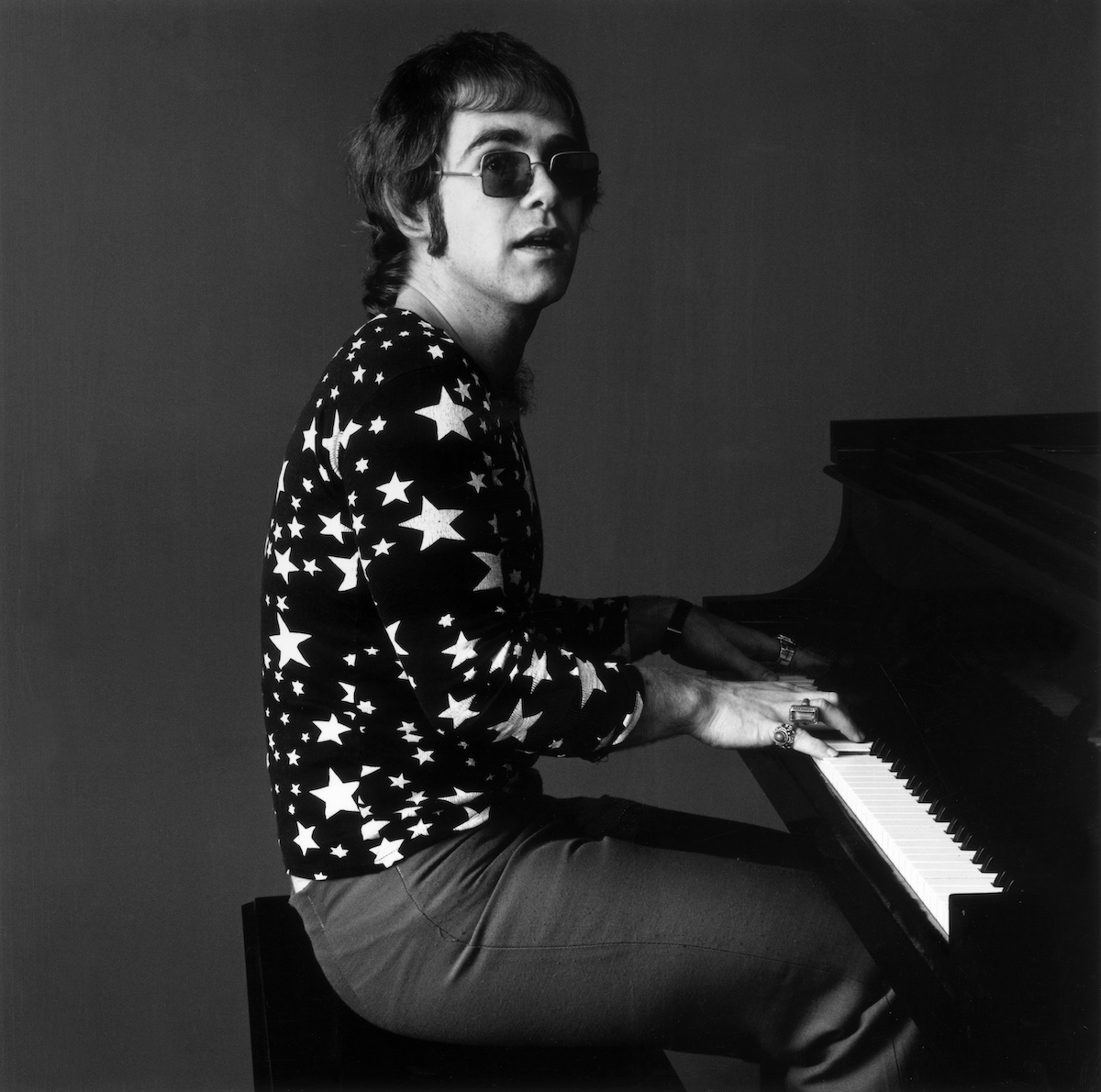
Paul Buckmaster, drummer Nigel Olsson, bassist Dee Murray, and guitarist Davey Johnstone. By the end of the decade, John began to move away from that team as his grip on the charts loosened, but he’d seem to come roaring back with another major hit every few years. Though John worked with several other lyricists, including Tim Rice on a series of successful movie and stage musicals, Taupin remains the co-writer on most of John’s most famous songs.
Over the past half century, Elton John has won Grammys, Oscars, an Emmy, and a Tony, and is arguably the most successful recording artists of all time with over 300 million records sold. John retired from touring in 2023 after the conclusion of the Farewell Yellow Brick Road Tour, but continues to record new music, and recently teamed up with American singer-songwriter Brandi Carlile to release the collaborative album Who Believes in Angels? on April 4th. Where does it rank in his massive discography?
42. Victim of Love (1979)
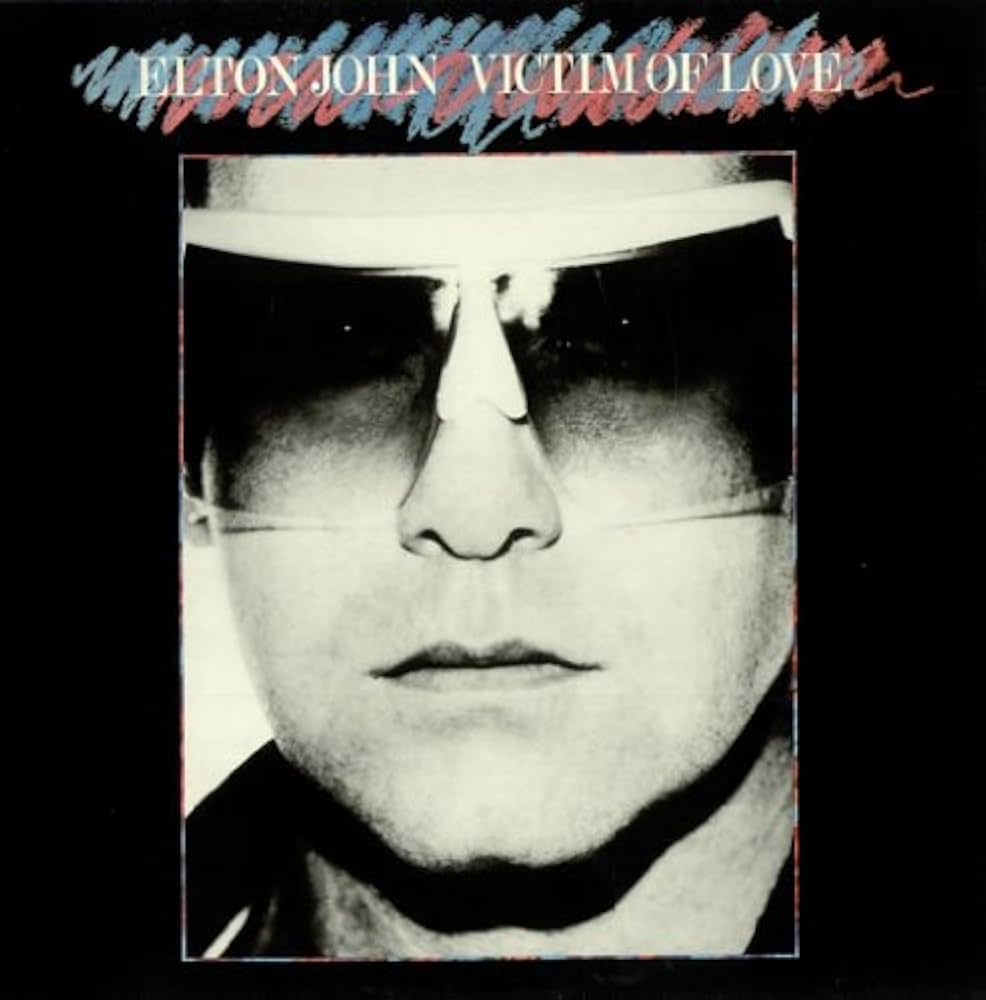
Plenty of rock artists made some great music while shamelessly jumping on the disco bandwagon, and Elton John very easily could have been one of them. Victim of Love isn’t a bad album because it’s disco, although the four-on-the-floor cover of Chuck Berry’s “Johnny B. Goode” that opens the LP is singularly terrible. John is completely checked out and coasting, singing a collection of generic dance tracks like “Street Boogie” that he had no hand in writing or even playing keyboards on. The way the album maintains a steady pulse from song to song like a DJ set is a nice touch, but you’d never want to walk into a club where Victim of Love is playing.
41. The Muse Original Motion Picture Soundtrack (1999)
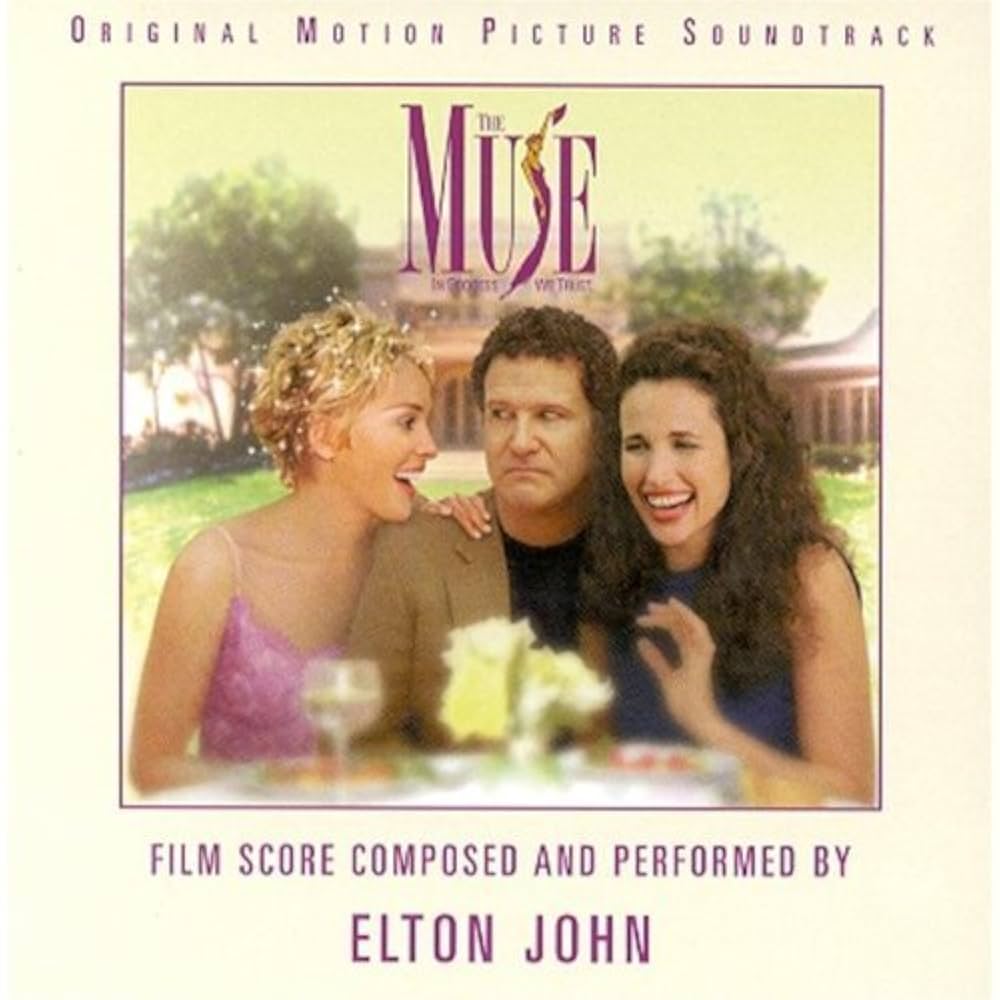
Writer/director/actor Albert Brooks was coming off a string of highly acclaimed comedies when he released The Muse, a show business satire co-starring Sharon Stone that disappointed at the box office and drew mixed reviews. Elton John composed an instrumental score for The Muse, but Guy Babylon’s orchestral arrangements lack the grandeur and beauty of Buckmaster’s strings on John’s best albums. The album ends with John’s saccharine title song co-written with Bernie Taupin, and a mildly jiggy remix of the track by hip-hop hitmaker Jermaine Dupri.
40. A Single Man (1978)
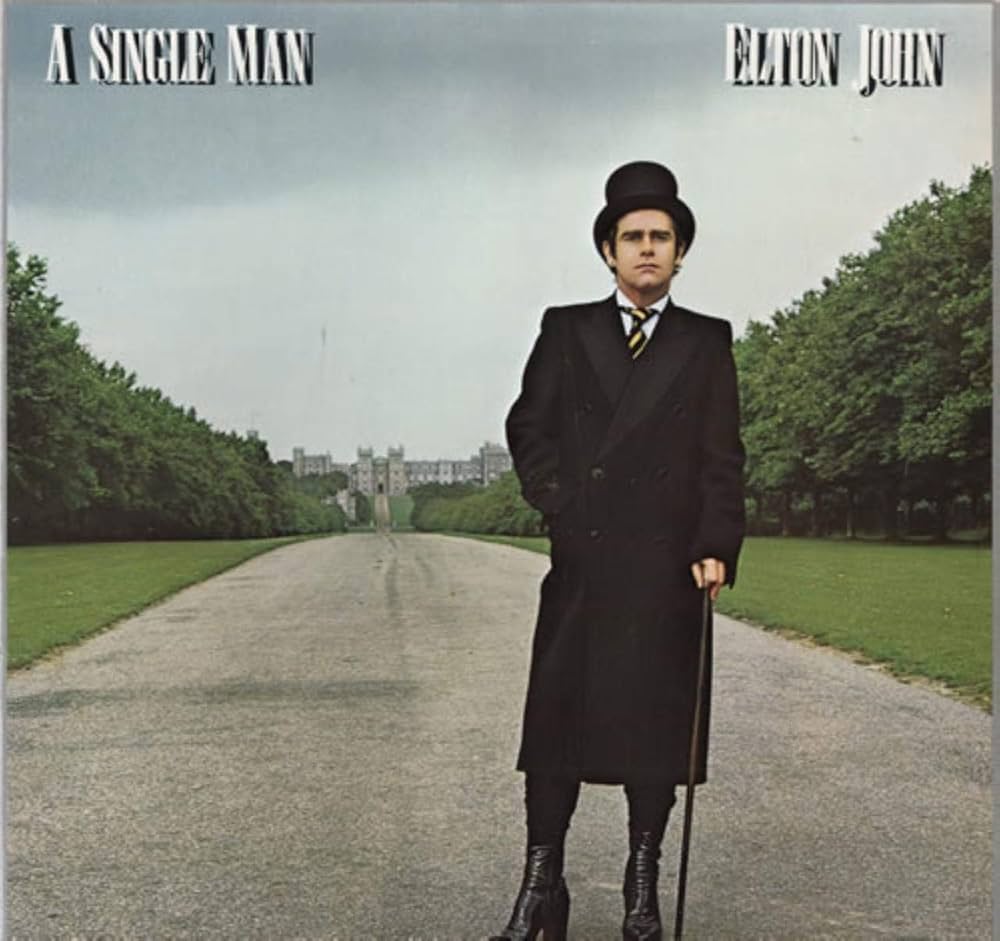
Gary Osborne is a journeyman British singer-songwriter with a long and varied career, including releasing two albums with the duo Vigrass & Osborne, penning advertising jingles and singles for Jennifer Warnes and Alice Cooper, and singing backup on hits by the Faces and the Rubettes. In 1978, Osborne tried to fill Bernie Taupin’s very big shoes when he became only the second lyricist to co-write an album with Elton John. There’s nothing glaringly wrong with the words John sings on A Single Man, but the unique alchemy of his partnership with Taupin just doesn’t happen with Osborne, and songs like “Part-Time Love” and “Return to Paradise” feel like substandard attempts to keep the hits coming. The mostly instrumental “Song for Guy,” dedicated to Guy Burchett, an employee of Rocket Records who’d died in a motorcycle crash, is one of few notable songs Elton John composed with no co-writers.
39. The Big Picture (1997)
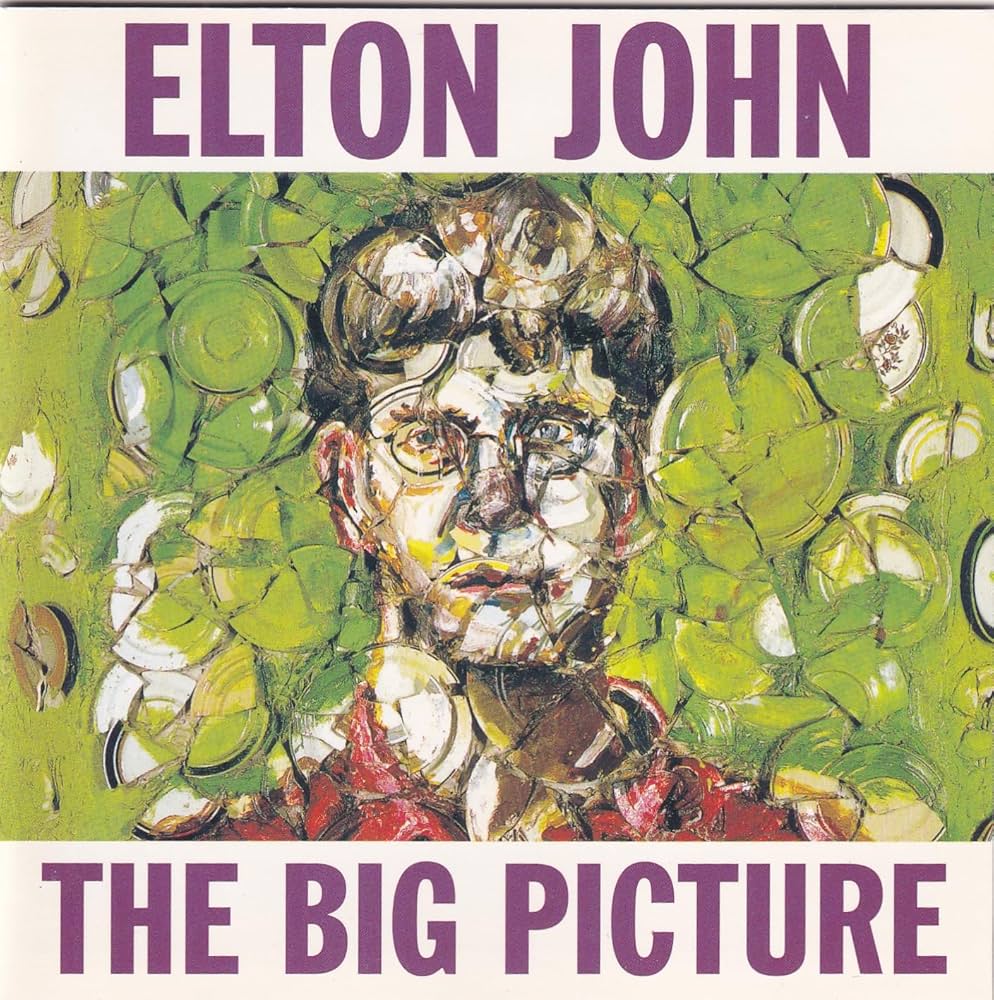
If The Big Picture’s lead single, the blandly pleasant “Something About the Way You Look Tonight,” wasn’t released as a double A-side with Elton John’s massively popular tribute to Diana, Princess of Wales, “Candle in the Wind 1997,” the album probably would have left no mark on popular culture whatsoever. Taupin has called The Big Picture the worst album he made with John, and there’s little on the album that would make you want to argue with him, outside of perhaps the swaggering uptempo closing track “Wicked Dreams.” It turned out to be John’s last collaboration with Chris Thomas, the producer of most of his ‘80s and ‘90s work.
38. The Fox (1981)
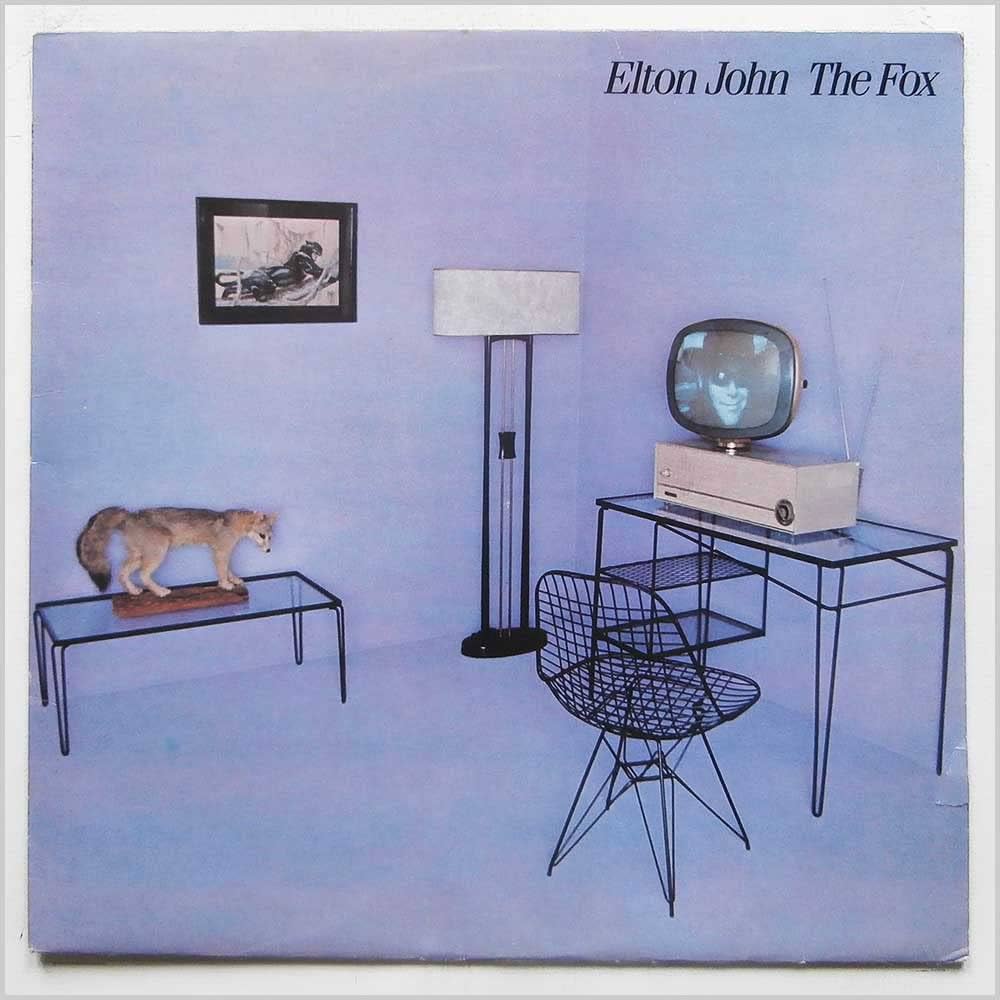
Chris Thomas’s work with Elton John dates all the way back to some Moog programming for his 1970 self-titled album, but Thomas didn’t produce one of John’s albums until The Fox over a decade later. The synths on “Nobody Wins” and “Elton’s Song” are garish, but the piano-driven songs are a little closer to at least superficially resembling the singer’s best work. “Just Like Belgium,” a quirky remembrance of a hard drinking trip abroad, would stand out as a highlight even if it wasn’t one of the two songs co-written with Bernie Taupin.
37. Leather Jackets (1986)
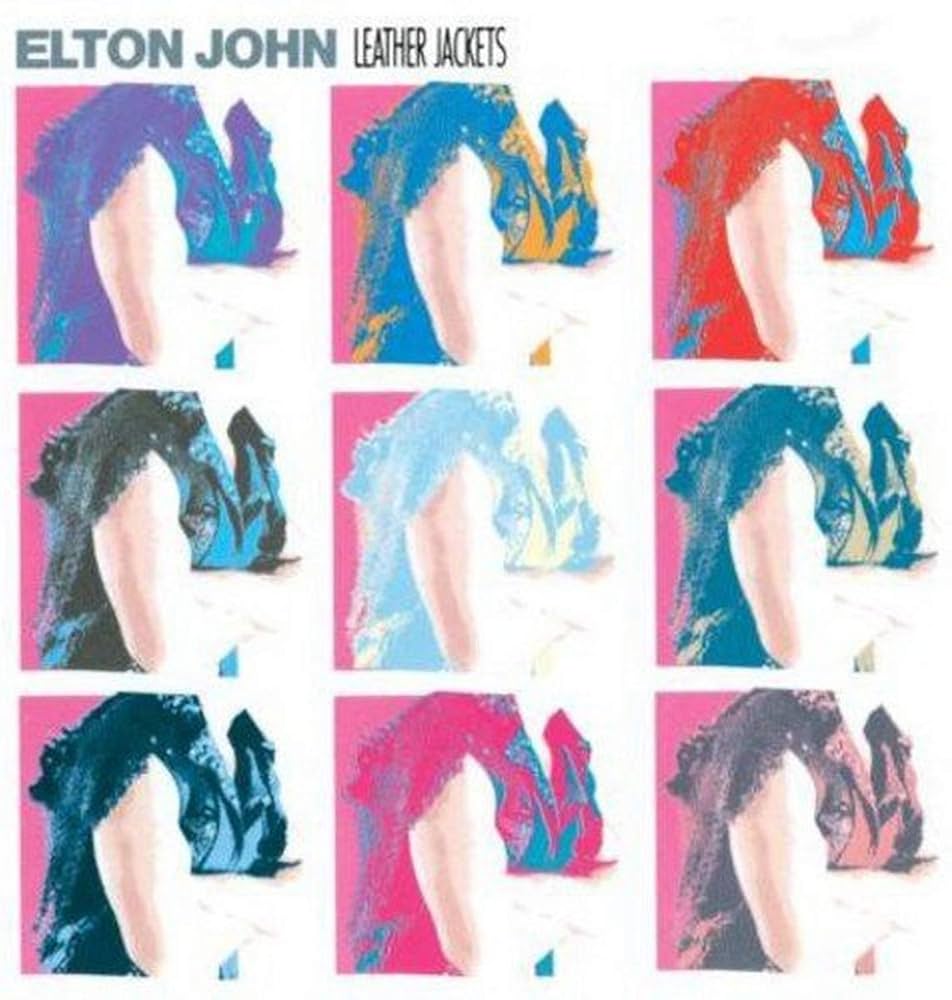
Elton John reunited with Dudgeon for two ‘80s albums, Ice on Fire and Leather Jackets, but the magic was gone, or at least temporarily stifled by John’s addiction issues. Many of John’s lesser albums still have an ace single or two, but the cloying “Heartache All Over the World” is the worst lead single he’s ever released. “John’s latest work extends his streak of artistically disappointing albums. The up-tempo songs sound random, and the ballads don’t have much flavor or drama,” Jon Matsumoto wrote in the Los Angeles Times review of Leather Jackets.
36. Made in England (1995)
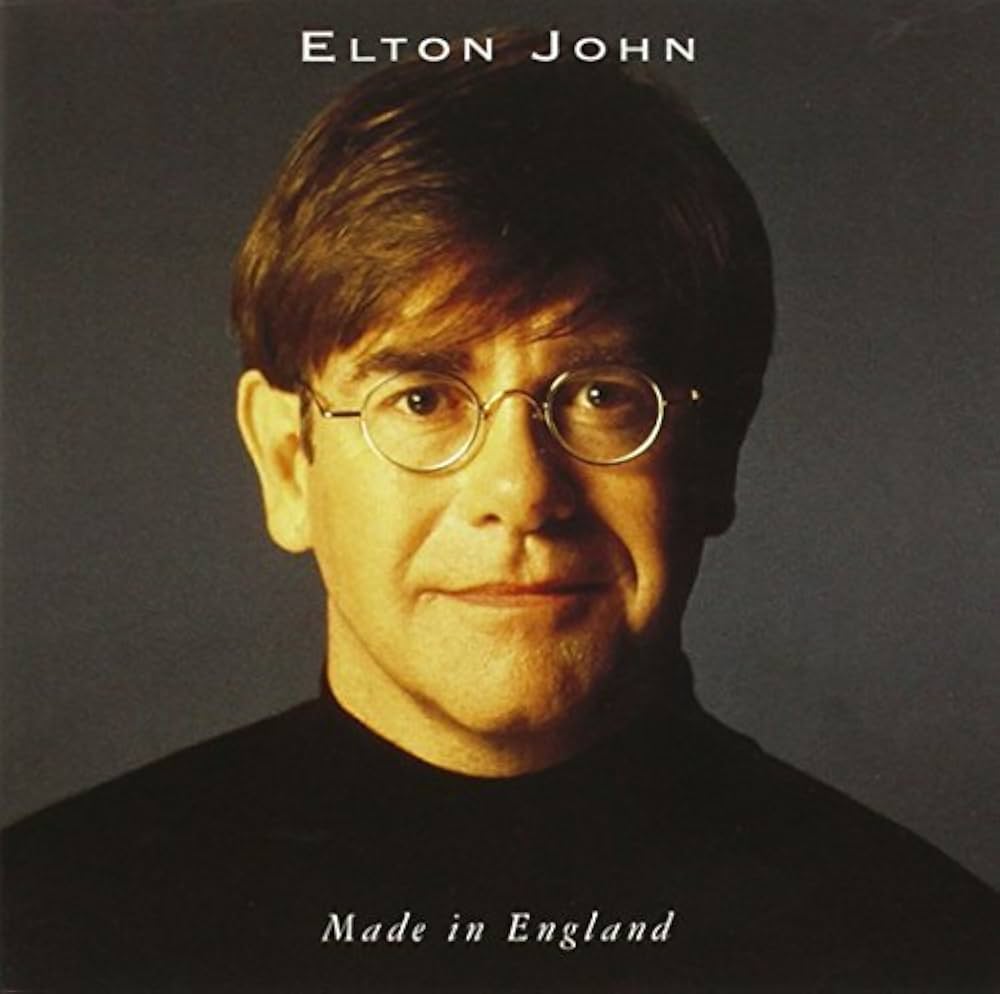
A year after Elton John was inducted into the Rock and Roll Hall of Fame and his songs for The Lion King became pop culture staples, he returned to releasing unexceptional solo albums like the slow, bombastic Made in England, his only album with k.d. lang producer Greg Penny. Songs like “House,” “Cold,” “Pain,” and “Lies” aren’t much more interesting than their monosyllabic titles. At least Buckmaster, who hadn’t worked with John since the ‘70s, adorns “Belfast” with beautiful Celtic pipes and fiddles.
35. Ice on Fire (1985)
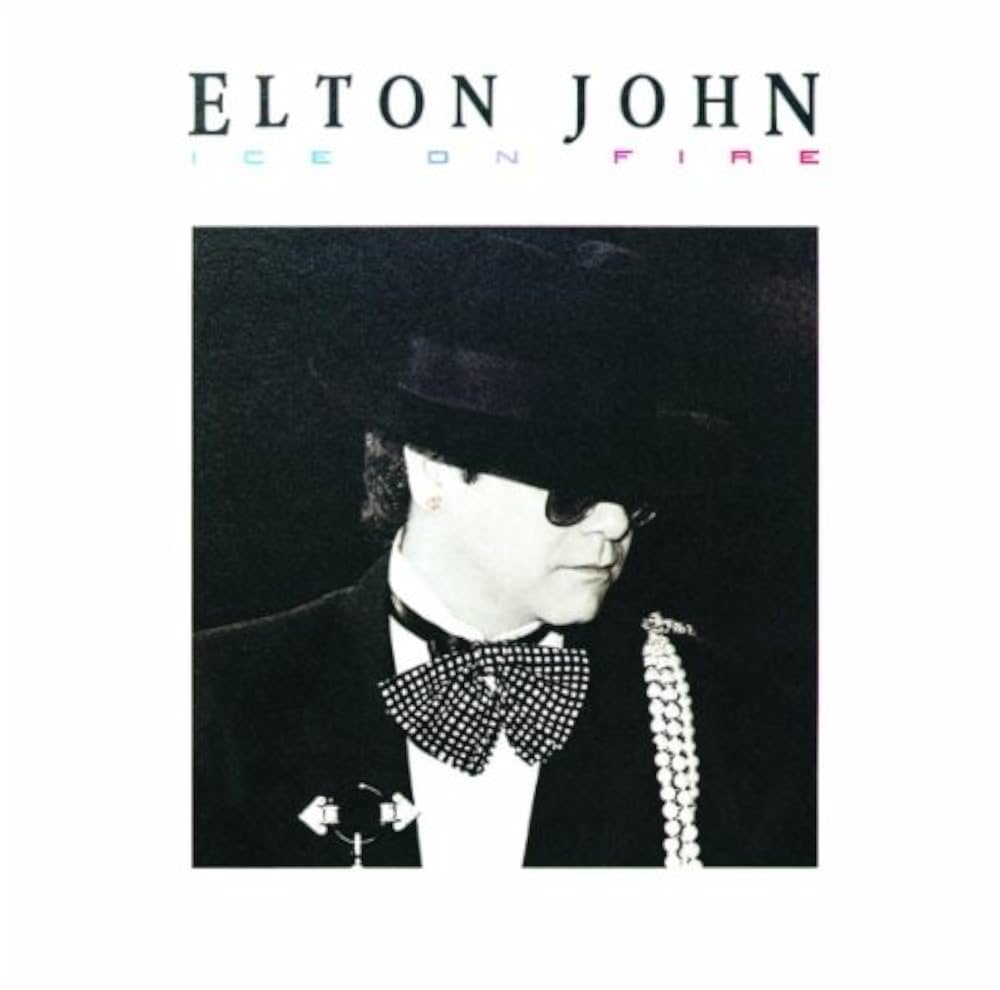
George Michael was ascending to pop stardom with Wham! when he first got to work with one of his idols, performing “Don’t Let the Sun Go Down on Me” with Elton John at Live Aid. A few months later, John released Ice on Fire, with Michael making vocal cameos on the album’s first two singles, “Nikita” and “Wrap Her Up,” neither of which is really worthy of being the duo’s only studio collaborations. The soulful synth ballad “Too Young,” featuring Queen’s rhythm section of John Deacon and Roger Taylor, is a better use of celebrity guests.
34. The Lockdown Sessions (2021)
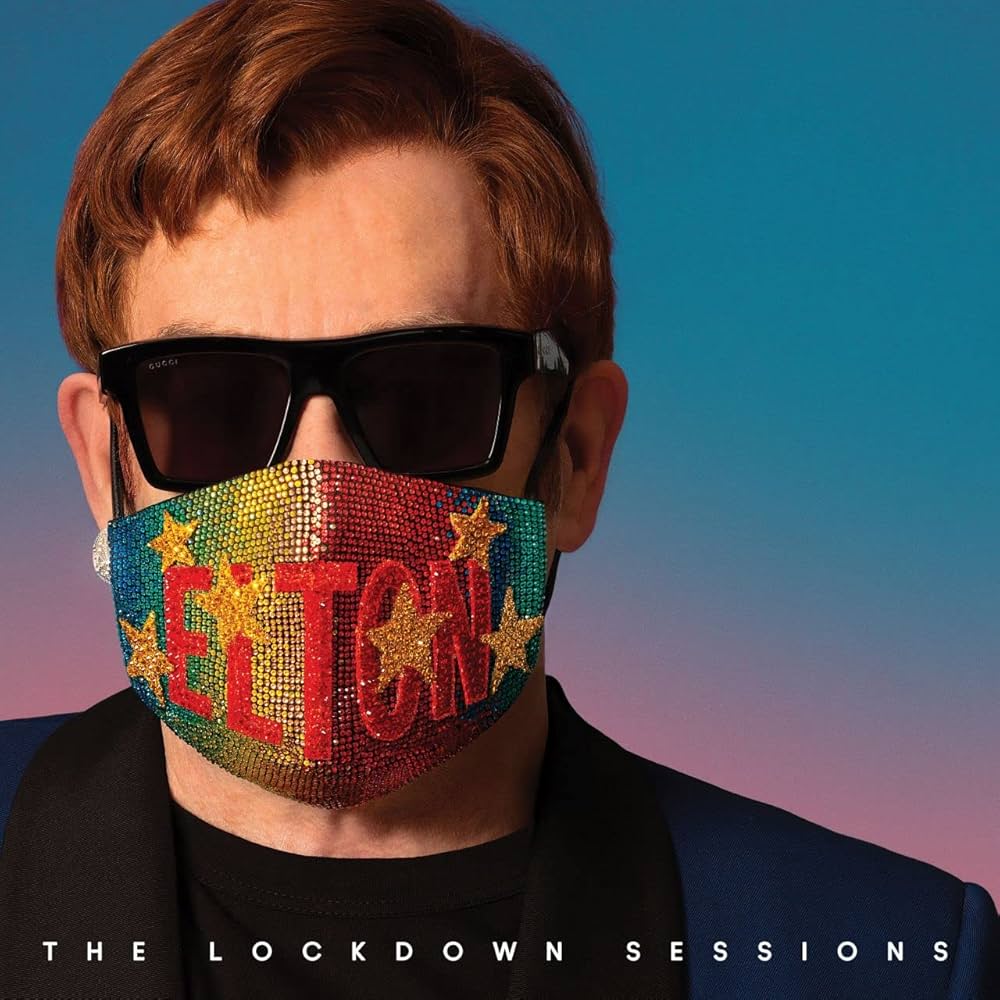
No Boomer rock icon has kept up with music’s cutting edge as voraciously as Elton John, at least not since David Bowie’s passing. So when John pops up on a song with Young Thug or Rina Sawayama, it’s because he’s genuinely a fan of those artists, not because his label is trying to market him to a younger demographic. The Lockdown Sessions, created early in the COVID-19 pandemic with John and his collaborators sending home recordings back and forth, is a mixed bag in every sense, the only album you’ll ever hear with Lil Nas X on one track and Eddie Vedder on the next. As a document of John’s appetite for discovering music and trying new things, however, its unpredictable variety is charming. The singles “Cold Heart” featuring Dua Lipa and “Hold Me Closer” featuring Britney Spears, in which the pop divas dueted with sampled vocals from Elton John oldies, extended his remarkable 52-year run of Top 10 hits. “The Lockdown Sessions’ all-bets-off stylistic game of spin-the-bottle feels attuned to 2021’s post-genre Spotify world,” Gary Ryan wrote in the Guardian’s review of the album.
33. Elton John’s The Road To El Dorado (2000)
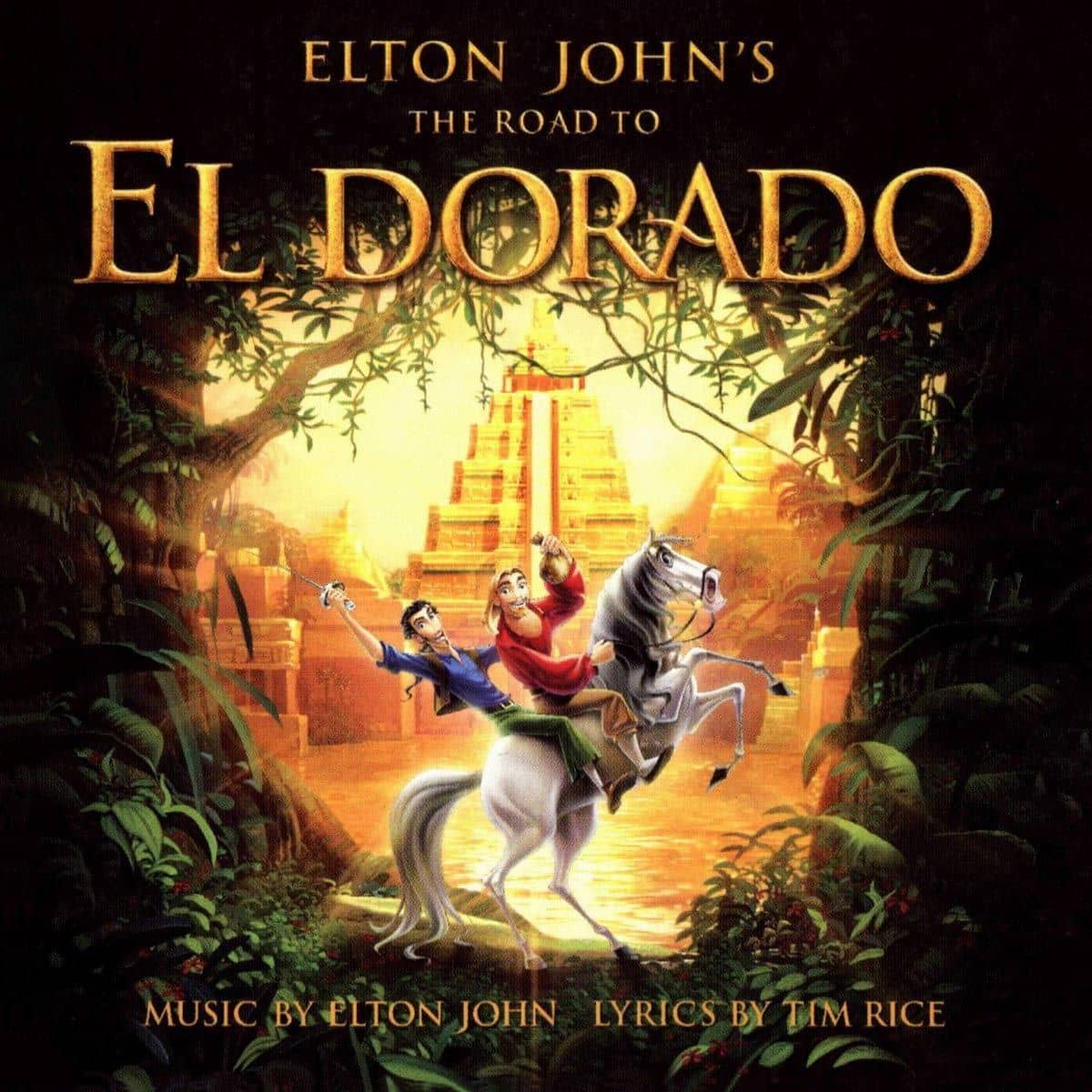
DreamWorks Animation spent a lot of money trying to land a hit that could compete with Disney blockbusters before they started making a mint on Shrek movies, and they never made back the $95 million budget for The Road to El Dorado in its theatrical run. A large chunk of that budget went to getting the team behind the music from The Lion King: composer Hans Zimmer, lyricist Tim Rice, and Elton John, who also narrated The Road to El Dorado. John’s jaunty, pleasant tunes include a duet with another titan of animated soundtracks, Randy Newman, “It’s Tough to Be a God,” but there’s nothing remotely as memorable as The Lion King’s songs here.
32. Elton John and Tim Rice’s Aida (1999)
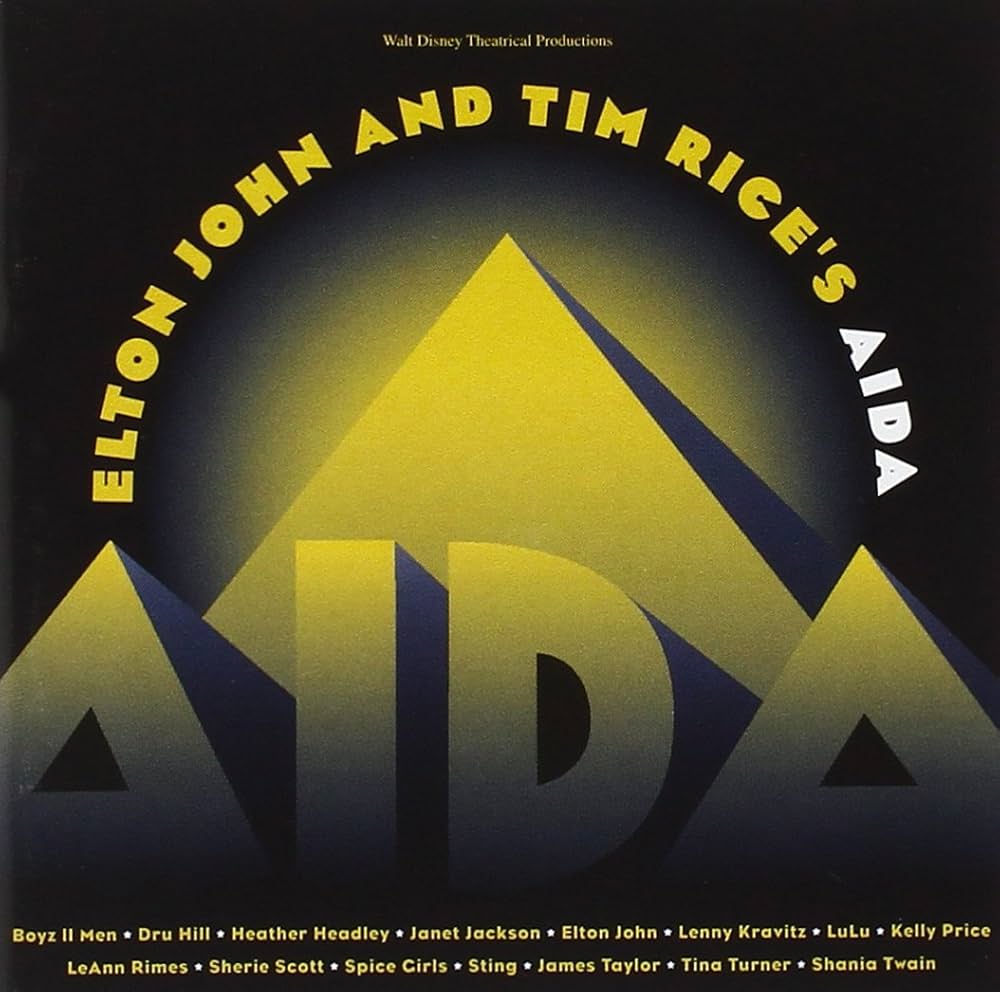
John and Rice also collaborated on the musical Aida, based on Giuseppe Verdi’s opera of the same name, and it ran on Broadway from 2000 to 2004, winning four Tony awards. First, though, John recorded an all-star album of Aida’s songs to drum up interest in the project. Everyone from Shania Twain and the Spice Girls to Dru Hill and Lenny Kravitz turn up to perform the musical’s songs, and John sings a few duets with LeAnn Rimes, Janet Jackson, and others. The result sounds more Billboard than Broadway, which is probably the point.
31. 21 at 33 (1980)

21 at 33 was really Elton John’s 14th album (he was counting compilations and live albums), but its title aptly represents how relentlessly prolific he had been in the first decade of his career. And after that hot streak, he finally was beginning to sound tired and depleted. Taupin wrote a bleak lyric about cocaine, “White Lady White Powder,” but John’s music for the song is almost disconcertingly cheerful. “Take Me Back” is a bright spot buried in the album’s second half, one of John’s finest country songs.
30. The One (1992)

After embracing sobriety in the early ‘90s, John released his best-selling album in 16 years, and spoke frankly with Rolling Stone about being openly gay. The One represents a triumphant turning point in John’s career, when he began to lead a happier and more stable life, but it’s also when he started to make some extremely dull, plodding albums. My mother bought The One when I was ten years old, and just as I did back then, I have little use for the album beyond the catchy opening track “Simple Life.” “The lyrics of ‘The Last Song’ — sung from the vantage point of a terminally ill man whose father comes through for him — convey a heartbreaking desolation that the syrupy melody can’t,” Stephanie Zacharek wrote in the Entertainment Weekly review of The One.
29. Jump Up! (1982)
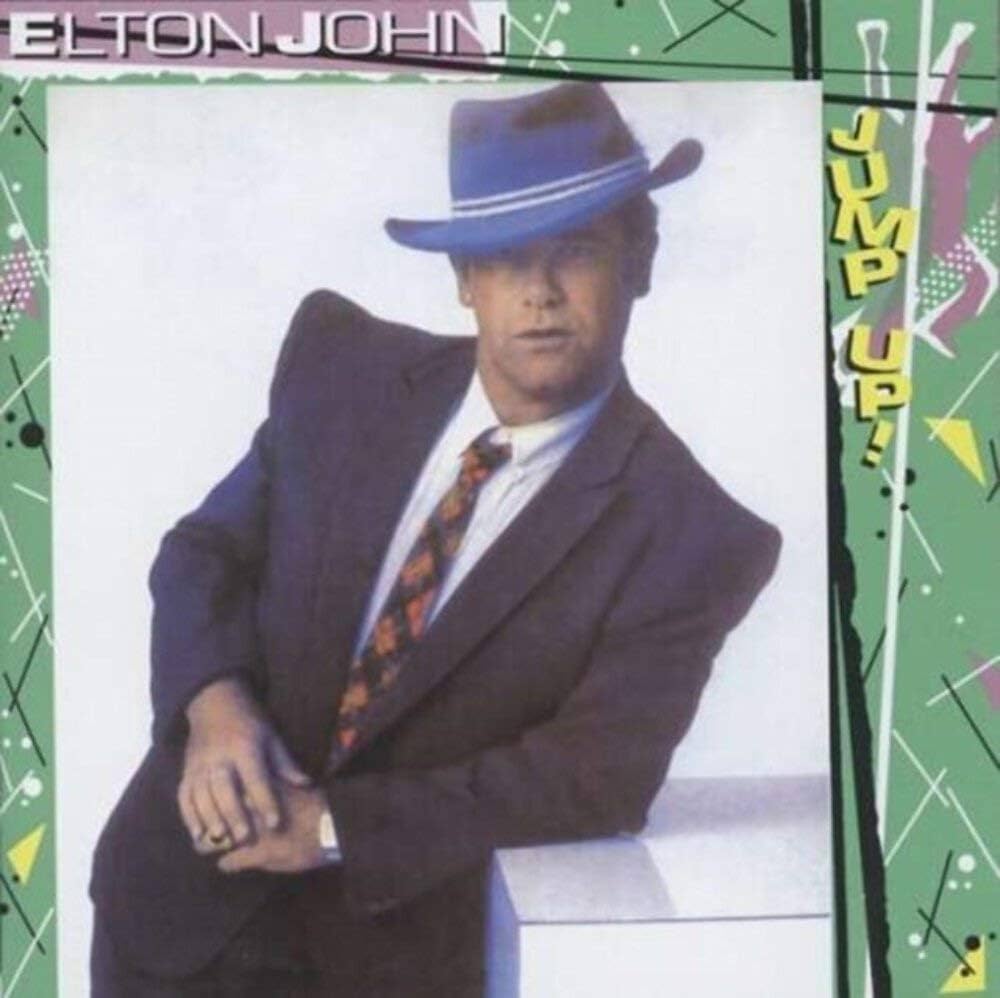
Elton John was good friends with John Lennon–the Beatle’s only live performance of the last decade of his life was at Elton John’s 1974 Madison Square Garden concert–and “Empty Garden (Hey Hey Johnny)” was a heartfelt tribute penned by John and Taupin after Lennon’s murder. Murray, one of the only holdovers left from his ‘70s collaborators on the album, makes sure that even the flimsier Jump Up! songs like “Dear John” and “Spiteful Child” have wonderfully melodic basslines. Even “I Am Your Robot” turns out to be a surprisingly good song once you get past the title and the silly sci-fi synths.
28. Duets (1993)
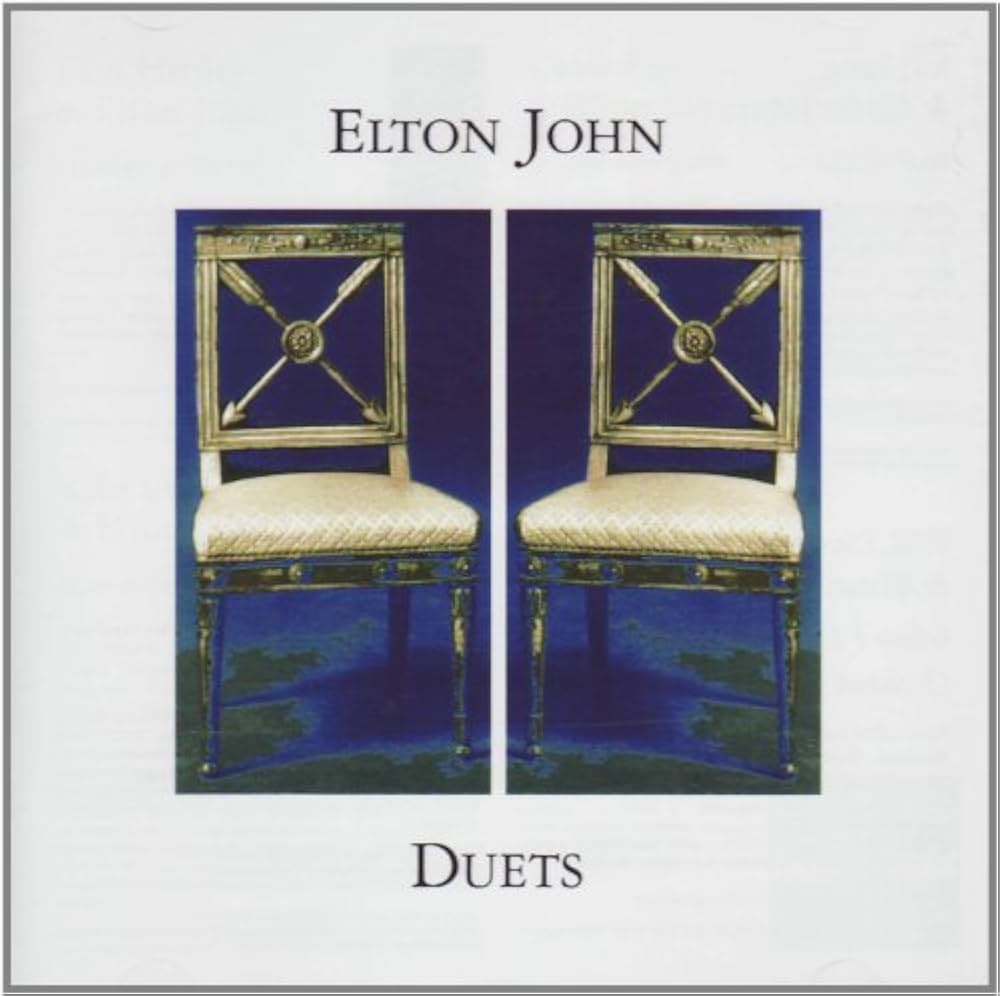
In recent decades, duet albums have become an easy way for aging stars to score a hit with minimal effort, re-recording their most famous songs with a dozen other celebrities. But Elton John’s Duets, released three weeks after Frank Sinatra’s far more predictable Duets, is a genuine artistic statement that reflects his eclectic tastes. John and Taupin wrote excellent new songs for him to sing with Little Richard and Tammy Wynette, while he picked less obvious R&B covers for other duet partners (singing Womack & Womack with k.d. lang and a minor Temptations hit with Don Henley). One of John’s greatest duets, a 1991 live rendition of “Don’t Let the Sun Go Down on Me” with George Michael that topped the Hot 100, closes out the album along with “Duet for One,” a clever solo track co-written with Chris Difford of Squeeze.
27. Regimental Sgt. Zippo (2021)
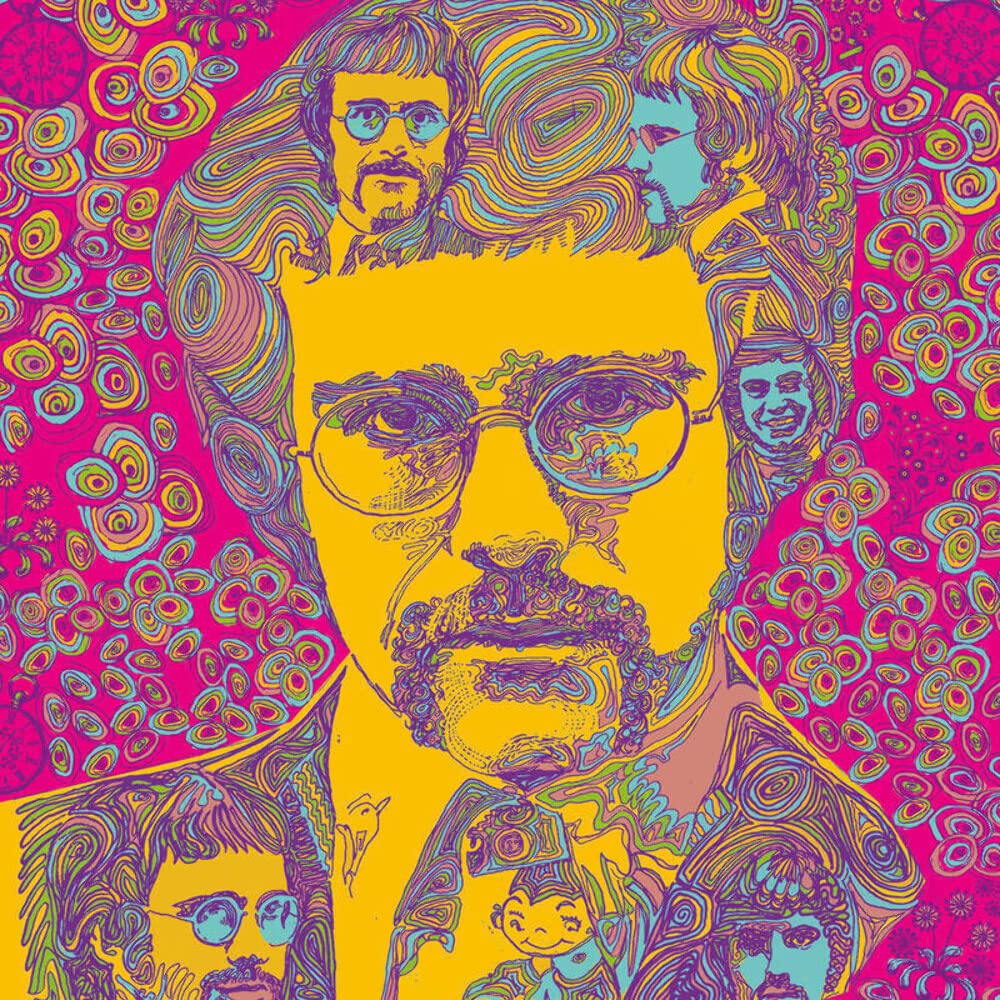
A year before Elton John’s 1969 debut album Empty Sky was recorded, he’d made a completely different record that was rejected by his label DJM Records, and remained unreleased for half a century until it was issued as a limited edition Record Store Day release. As you might guess from the title, Regimental Sgt. Zippo is blatantly derivative of the Beatles’ Sgt. Pepper’s Lonely Hearts Club Band, but a lot of albums were in 1968, and it’s not a bad record at all, as dated and transparent as it may be. Some of Taupin’s more surreal lyrics are well suited to the psychedelic backdrop, and “Nina” has a hard rock groove straight out of a Jimi Hendrix Experience record that suggests an intriguing road not taken. When the piano takes center stage on “You’ll Be Sorry to See Me Go,” though, you feel like you’re getting a glance at the birth of Elton John as we know him today.
26. The Complete Thom Bell Sessions (1989)
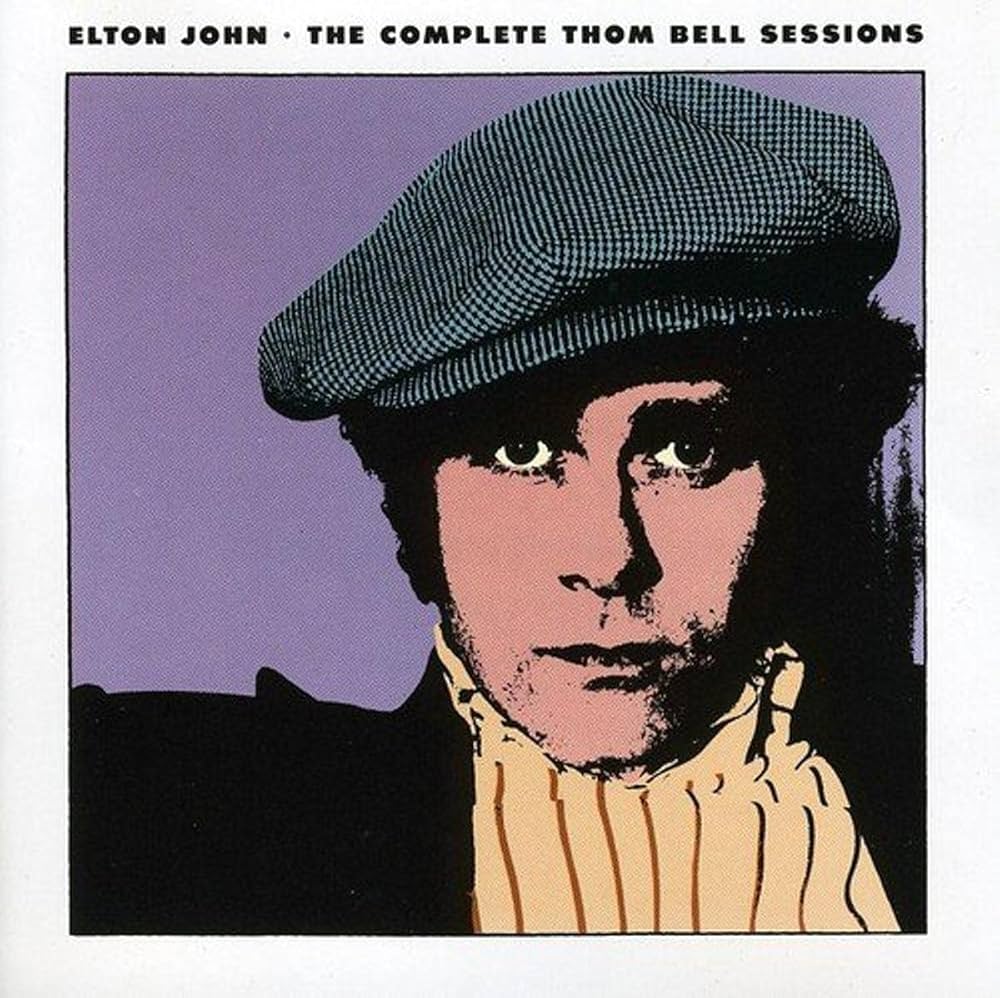
Elton John was always a vocal fan of American R&B, and paid tribute to Philly soul on his 1975 smash “Philadelphia Freedom.” When he was itching for new creative challenges in 1977, he entered the studio with one of the primary architects of the Philly soul sound, Delfonics and Stylistics producer-songwriter Thom Bell. Unfortunately, John and Bell apparently didn’t hit it off, and only six songs were completed, with three tracks coming out as an EP in 1979 and the full set finally seeing release a decade later. And it’s a shame that this music took so long to trickle out after its sound began to fall out of fashion, because “Nice and Slow” and “Three Way Love Affair” are far better than anything on the albums John released in the late ‘70s.
25. Reg Strikes Back (1988)
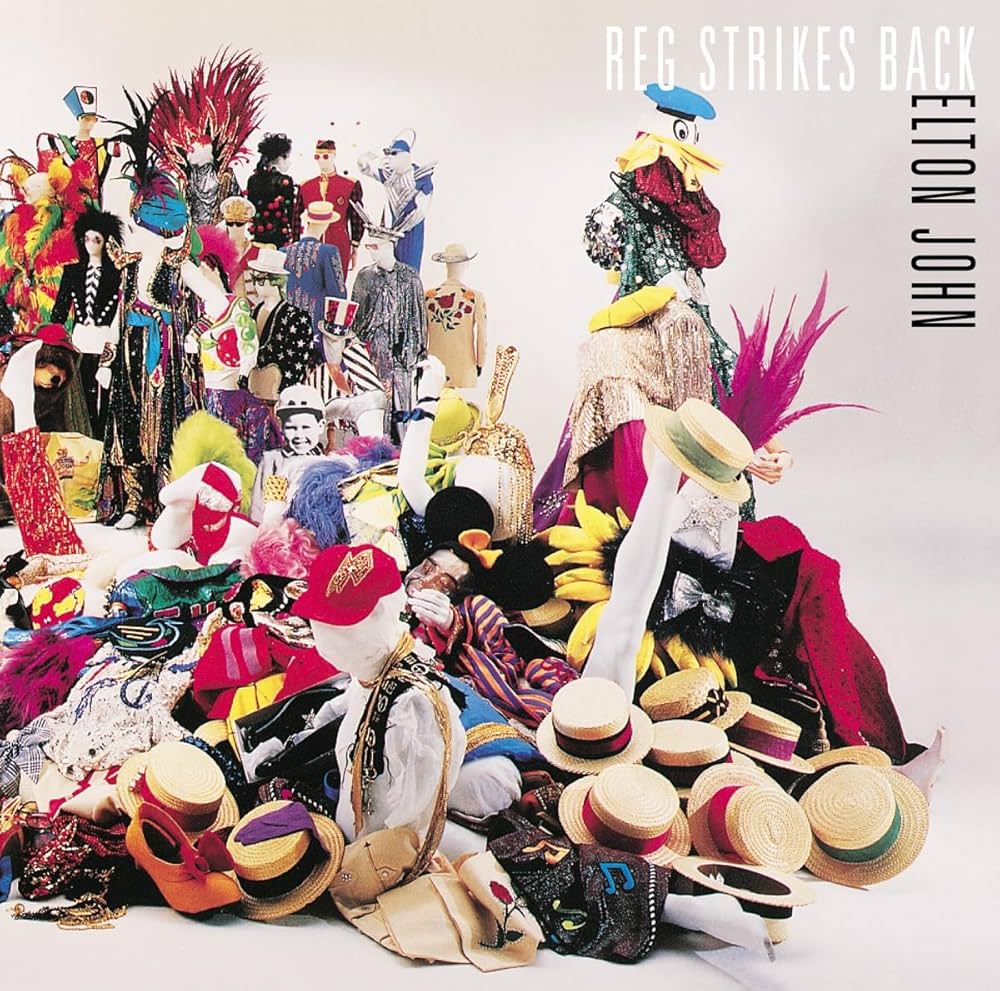
Elton John underwent a throat surgery in 1987 that he feared could be the end of his singing career. When it wasn’t, he returned the next year with Reg Strikes Back, an especially nostalgic album that features a forgettable sequel to one of his ‘70s classics, “Mona Lisas and Mat Hatters (Part Two),” and a cover photo of a pile of John’s old concert outfits. “Old Reg won’t win over the art crowd with this lot, but loyal fans will be happy to learn that the operative word here is ‘back,’ not ‘out,’” wrote Chris Heim in the Chicago Tribune review of Reg Strikes Back.
24. Wonderful Crazy Night (2016)
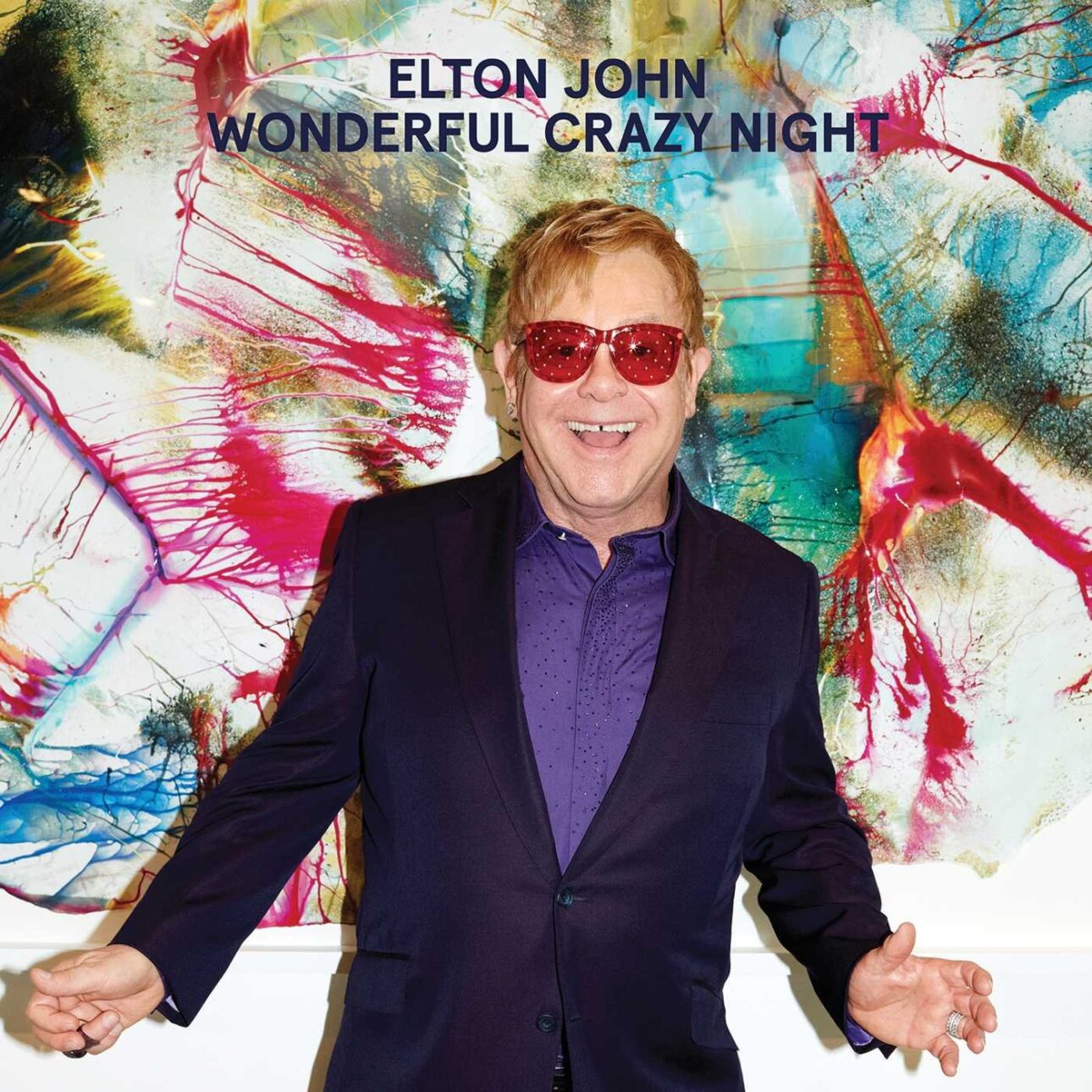
Although he’s recorded a lot of music since 2016, Wonderful Crazy Night currently stands as the last time Elton John released a solo album of all new material. Recording the album in 17 days with a small core band including Olsson and Johnstone, John sounds energized, but you can hear his age in his voice. His tone is more gruff, and he just doesn’t belt his melodies or enunciate Taupin’s words with the kind of verve and clarity that used to come naturally. Still, John’s piano playing is as gorgeous as ever on “The Open Chord” and “Looking Up,” with keyboardist Kim Bullard often adding lovely textures on electric piano and organ.
23. Empty Sky (1969)
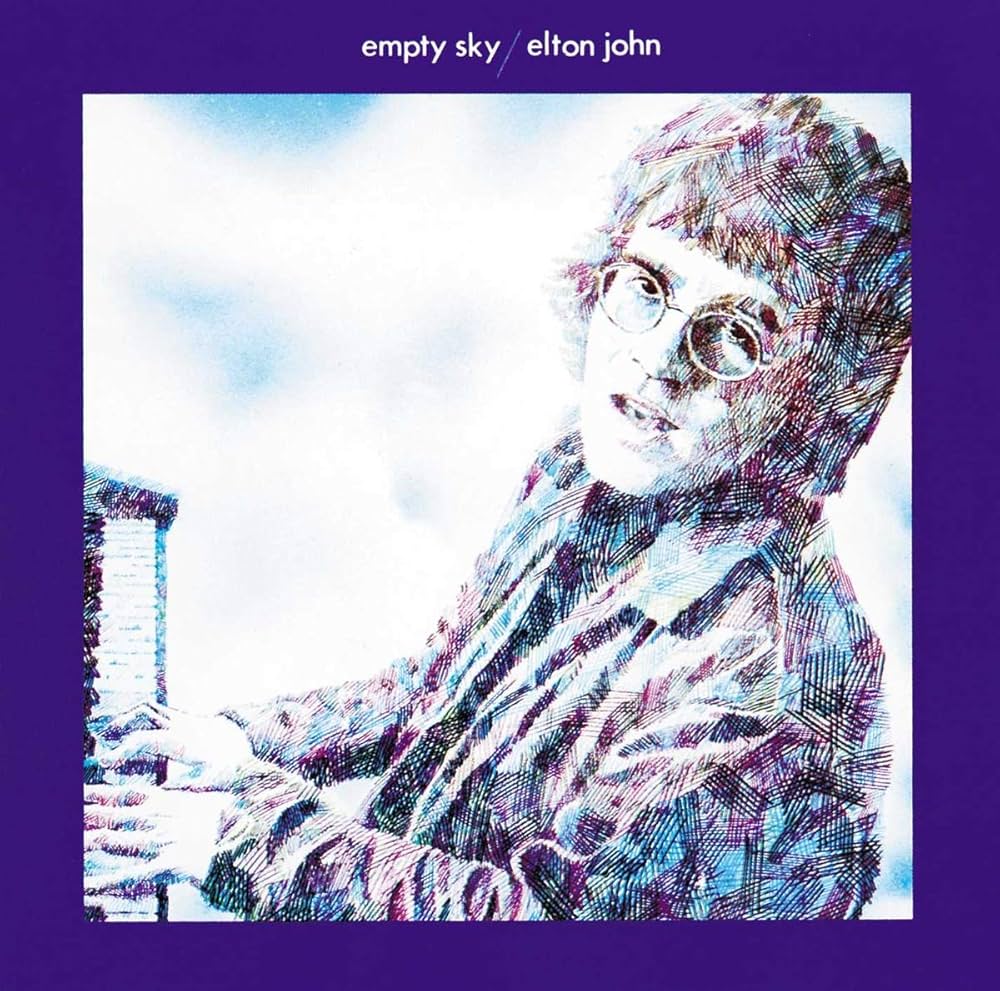
When Elton John released his debut album near the end of the 1960s, there was nothing about its commercial performance or the music itself that suggested that he’d be one of the biggest era-defining artists of the next decade. Once the album was finally released in America for the first time in 1975, though, his fanbase embraced the album, and it charted in the top 10, with the harspsichord-driven “Skyline Pigeon” becoming one of his most beloved early songs. Empty Sky’s 8-minute title track offers a woollier art rock version of Elton John than the crowd-pleasing balladeer that would take shape on his self-titled album a year later.
22. Friends Original Soundtrack Recording (1971)
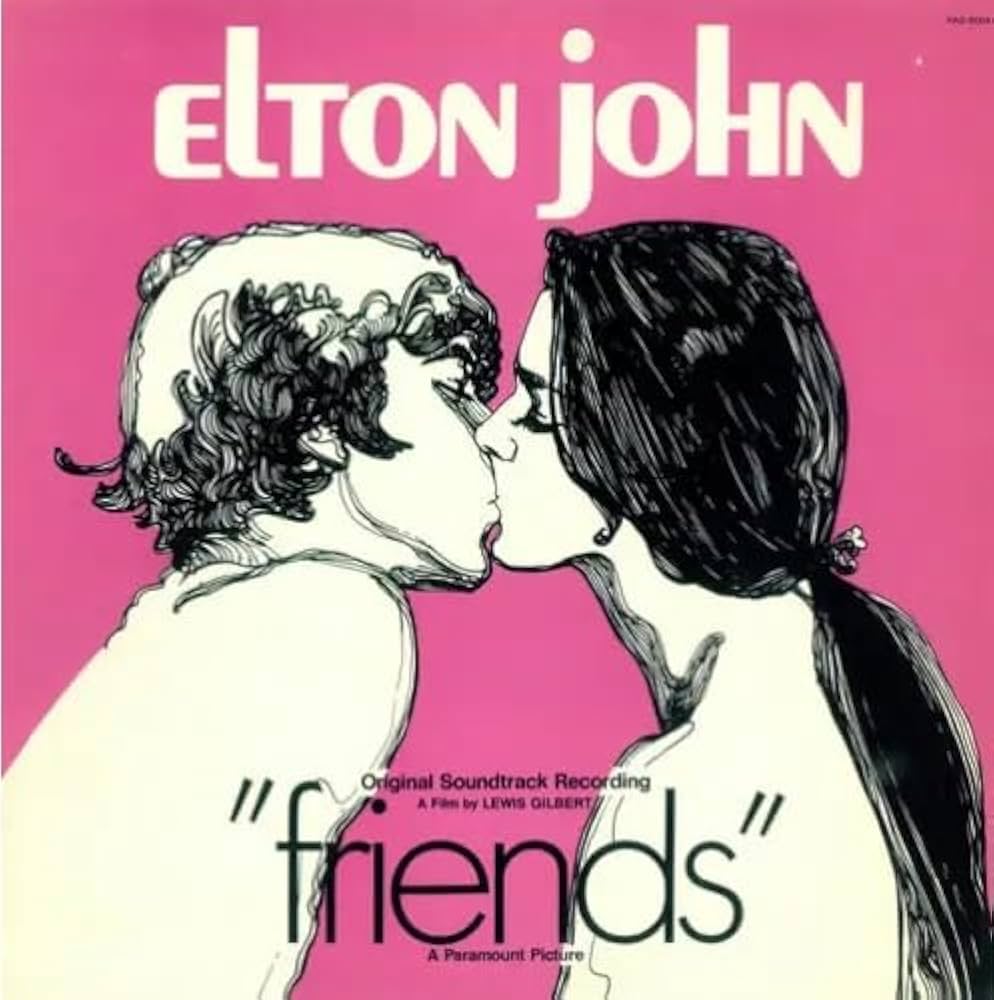
John and Taupin were hired to write music for Lewis Gilbert’s teen love story Friends in late 1970, after Elton John and Tumbleweed Connection had been recorded but before “Your Song” started to climb the charts and launch John to pop stardom. So the Friends soundtrack wound up going gold and achieving more commercial success than the film itself, which only did well at the box office in Japan. The album, which features six original songs and some beautiful instrumentals written by John and Buckmaster, is a relatively forgotten chapter from the fertile early days of John’s career. “Can I Put You On,” which also appeared on the live album 11-17-70, is one of his finest relatively unheralded songs.
21. Rare Masters (1992)
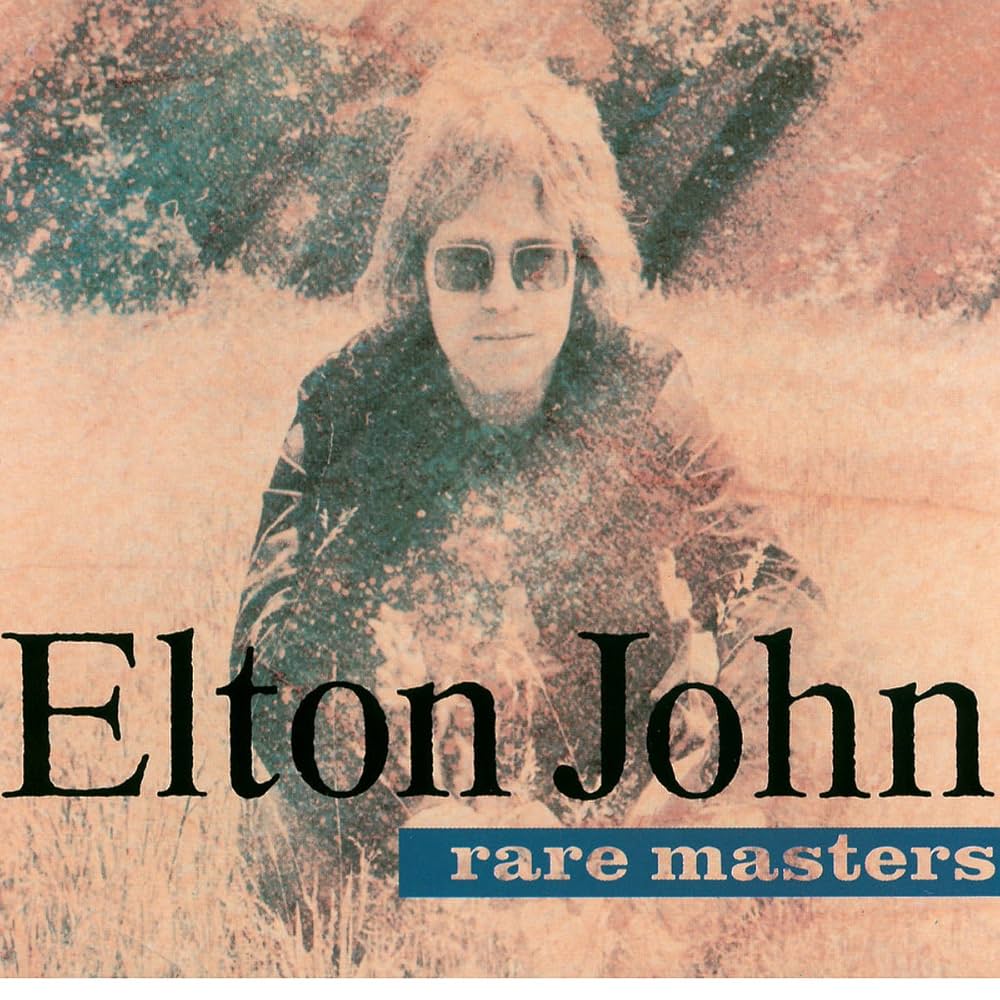
In 1974, DJM Records released Lady Samantha, a 14-song compilation of Elton John B-sides and outtakes. In 1992, Polydor released Rare Masters, a more comprehensive 37-track collection of John’s non-album material up through 1975, including every track from Lady Samantha and the Friends soundtrack. Rare Masters may not be as indispensable as the Beatles collection; it’s clearly patterned after 1988’s Past Masters. But it offers a similarly revealing glance at the leftover gems from a historic streak of hit albums, including entertaining minor works like “Bad Side of the Moon” and “Screw You (aka Young Man’s Blues).”
20. The Lion King Original Motion Picture Soundtrack (1994)
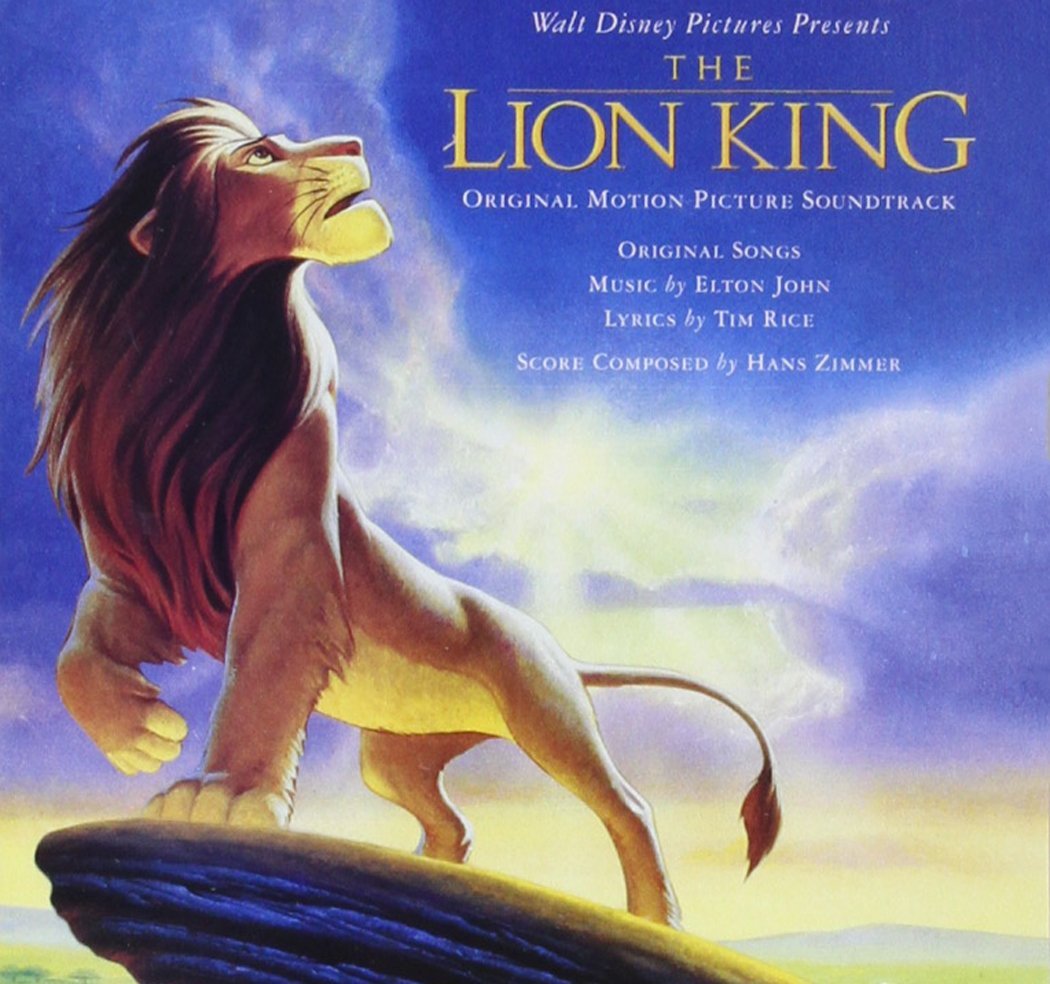
For all of the pop classics in Elton John’s solo catalog, it’s his songs with Tim Rice for The Lion King, for many years the highest grossing animated film of all time, that may endure for generations more than anything else he’s written. John only takes over to sing the last three tracks on the soundtrack album after a few selections of Hans Zimmer’s score, and “Can You Feel the Love Tonight” was his last fully new song to go Top 10 on the Hot 100. But the first half of the album featuring the film’s voice cast, particularly “Hakuna Matata” and “Be Prepared,” demonstrates the range of moods and characters that John’s melodies help bring to life. “The tunes are catchy but it helps if you’ve seen the film first,” Emma Cochrane wrote in the Smash Hits review of the Lion King soundtrack.
19. Rock of the Westies (1975)
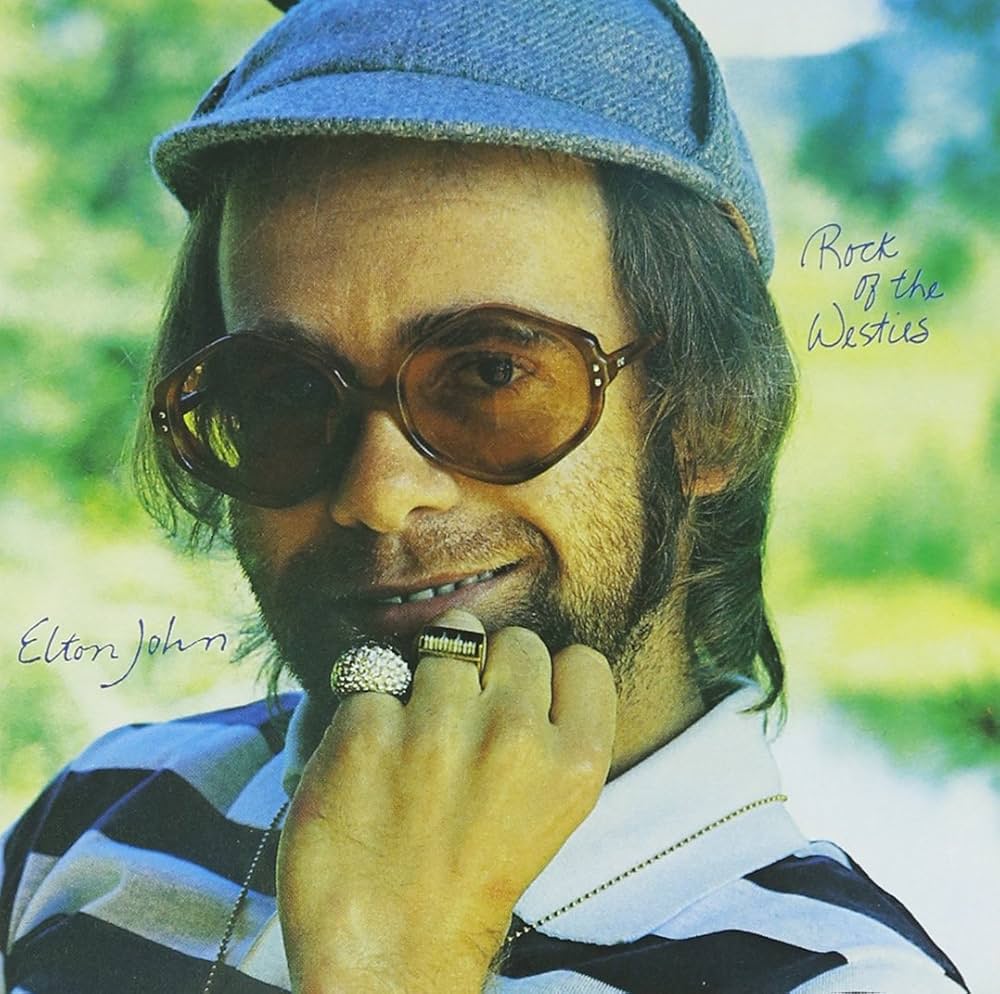
1975 represents the absolute peak of Elton John’s popularity. He released two platinum albums, played two sold out concerts at Dodger Stadium, and topped the Hot 100 with two non-album singles, “Philadelphia Freedom” and a cover of the Beatles’ “Lucy in the Sky with Diamonds.” John also fired Olsson and Murray that year, and in hindsight his second album of ’75 shows signs of creative burnout. “Island Girl” and “Grow Some Funk of Your Own” were hits, but not particularly good ones. And even album highlights like “Dan Dare (Pilot of the Future)” and “I Feel Like a Bullet (In the Gun of Robert Ford)” have the distinct whiff of John and Taupin getting carried away with their own whimsy.
18. The Captain & The Kid (2006)

Creating a sequel to an earlier masterpiece can often feel like a commercially savvy career move and little else. But given that 1975’s Captain Fantastic and the Brown Dirt Cowboy was perhaps John and Taupin’s most personal album, it’s moving to hear the old friends continue telling their story three decades later. By pairing the album with one of his classics, though, The Captain & The Kid unintentionally highlights just how much better and warmer John’s ‘70s albums sound compared to the somewhat sterile sound of his more recent output. “There’s a 40-second piano part at the beginning of ‘Postcards from Richard Nixon’ that brings to mind some of John’s best keyboard work — a combination of classical fills and barroom brio, the unique emphasis on alternating notes in a rhythmical manner that marks his distinctive piano playing as clearly as any other instrumental stylist of the rock era,” Tim O’Neil wrote in the Pop Matters review of The Captain & The Kid.
17. Songs from the West Coast (2001)
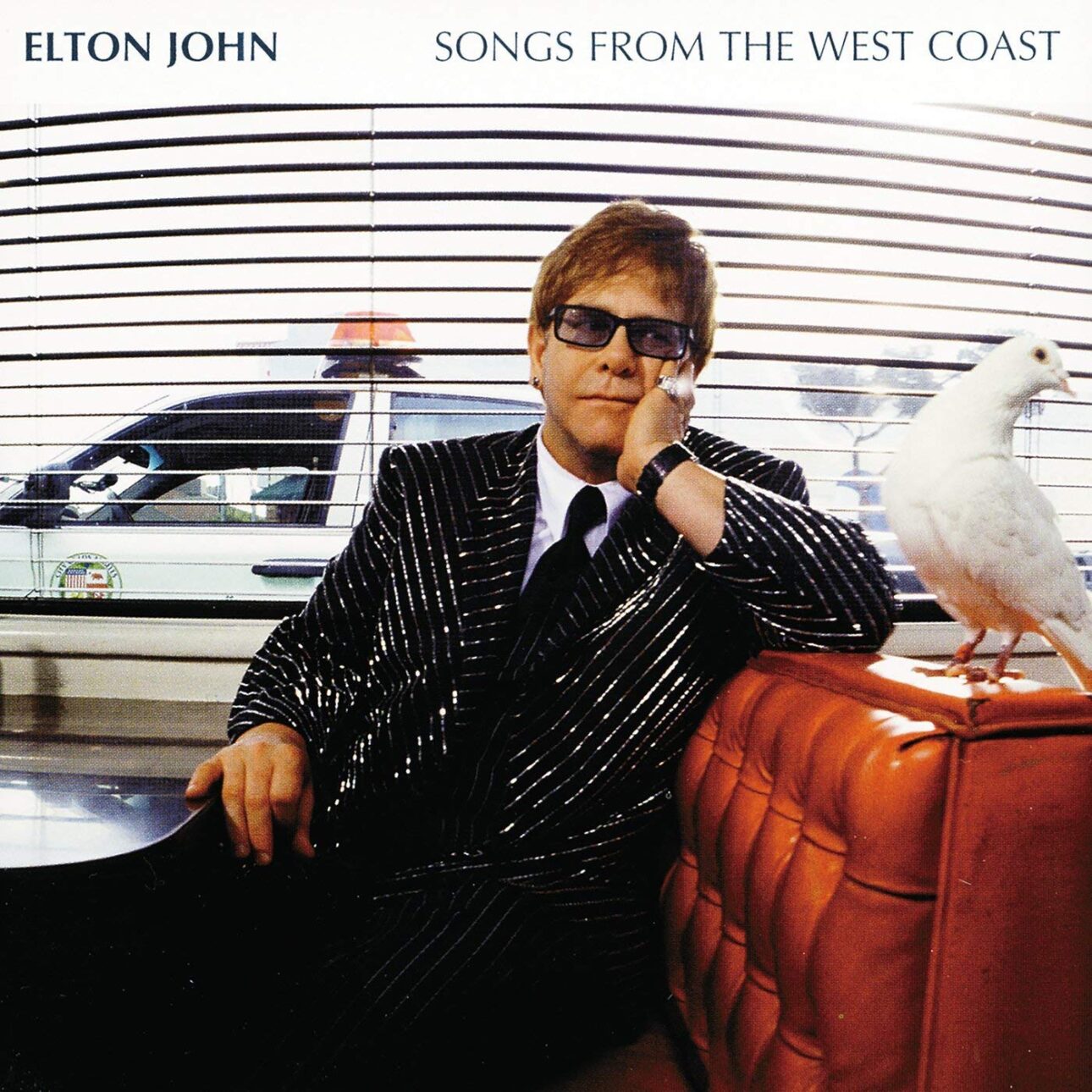
Songs from the West Coast marks the beginning of Elton John’s neoclassicist period of recording on analog tape with ‘70s collaborators like Olsson and Buckmaster. Surprisingly, the producer he made this back-to-basics move with was Patrick Leonard, best known as Madonna’s chief collaborator throughout her ‘80s and ‘90s reign. The album features appearances by Stevie Wonder and Billy Preston, and the videos for Songs from the West Coast’s singles starred Robert Downey Jr., Justin Timberlake, and Elizabeth Taylor. Beneath the starpower of that rollout, though, it’s a relaxed and confident album. The sobering standout is “American Triangle,” inspired by the 1998 murder of American college student Matthew Shepard.
16. Breaking Hearts (1984)
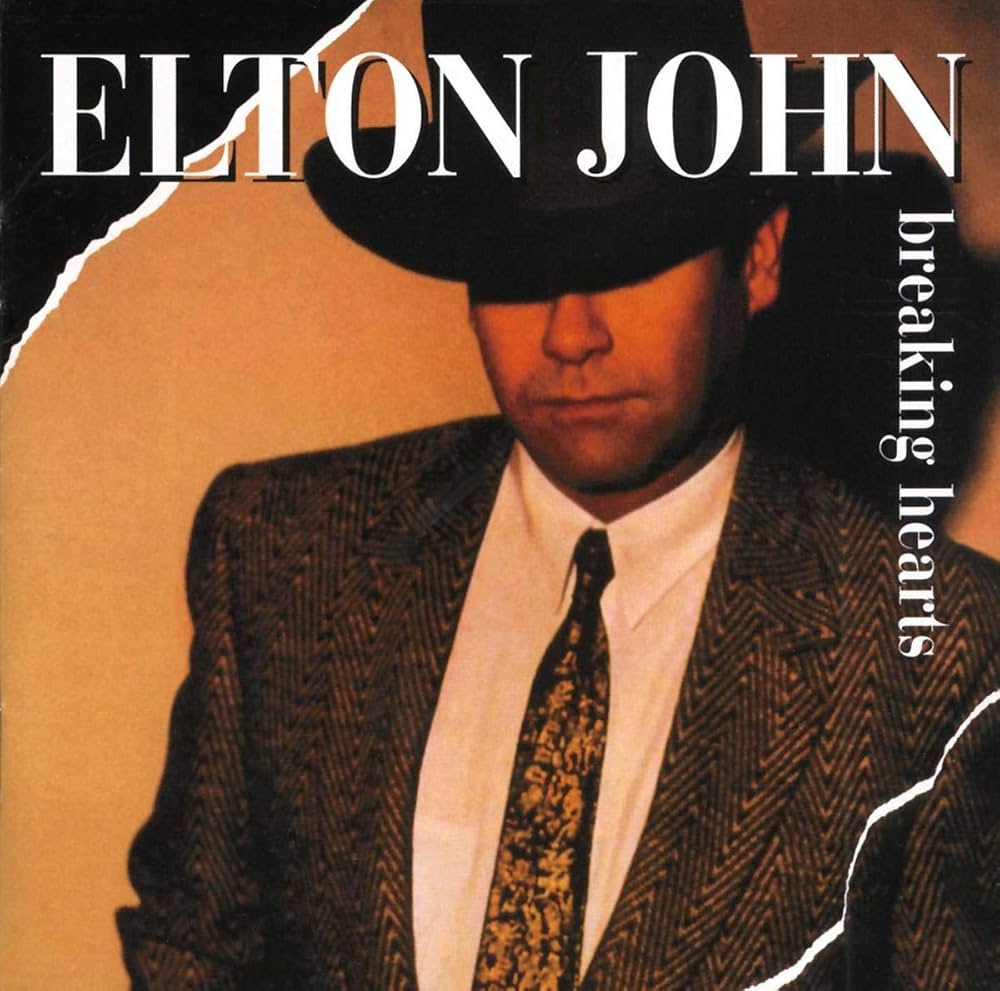
The lead single from Breaking Hearts, “Sad Songs Say So Much,” was one of the finest singles John and Taupin wrote in the ‘80s, and something of an enduring statement about their songwriting philosophy—even if John quickly adapted the song into the “Sasson says so much” jingle for a corny Sasson Jeans ad campaign. On one of the best deep cuts, Taupin returns to the wild west themes of Tumbleweed Connection for “Did He Shoot Her?” but John counterintuitively sets the words to a sparkling synth-driven track.
15. Who Believes in Angels? with Brandi Carlile (2025)
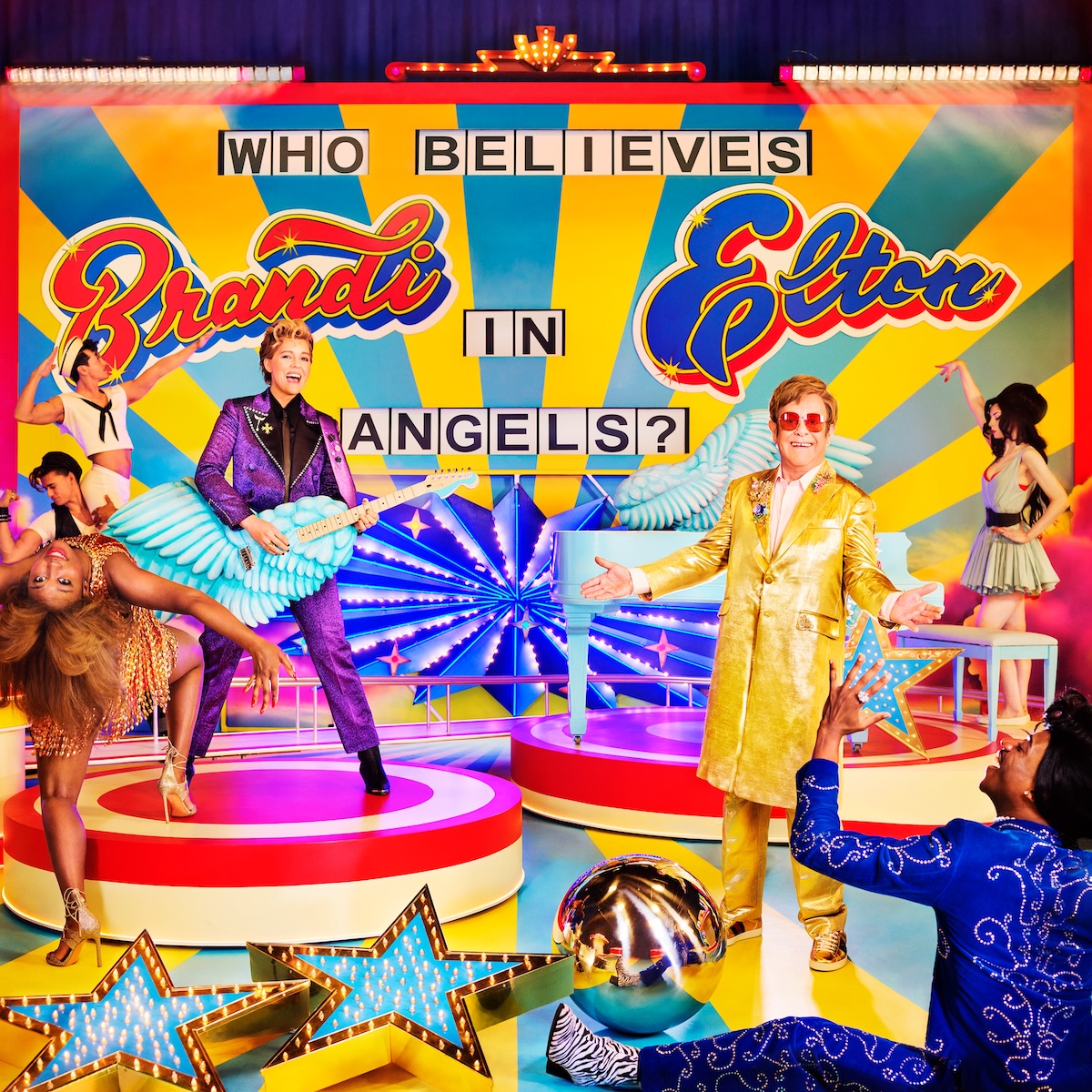
American singer-songwriter Brandi Carlile was born in 1981, a few weeks after John released his 15th album. But Carlile has created such an impressive catalog over the last two decades that it doesn’t feel all that far-fetched for her to become only the second person to make an album with Elton John as a duo (she actually has more than twice as many Grammys as he does). As an intergenerational conversation between two great queer artists, Who Believes in Angels? is at its best when it feels like you’re sitting between John and Carlile and a big pile of vinyl on “The Rose of Laura Nyro” and “Little Richard’s Bible.” When they sing together, their voices never really create an appealing blend of tones, and the Goodbye Yellow Brick Road bombast of Andrew Watt’s production smothers any chance of conjuring the intimacy and vulnerability of Carlile’s solo albums. But John and Carlile do find a lot of common ground on Who Believes in Angels? and a warm, easygoing creative chemistry.
14. Sleeping with the Past (1989)
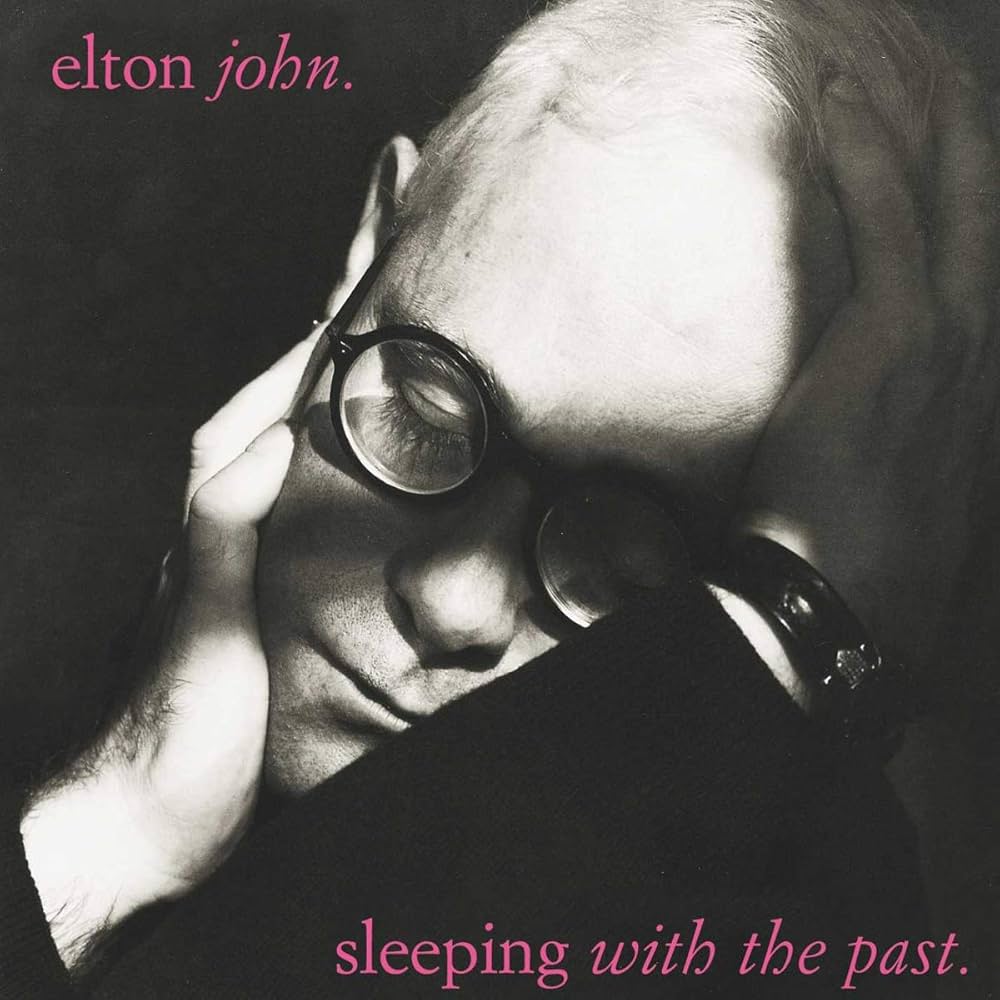
Sleeping with the Past is one of the few Elton John albums that did far better in Europe than in America, with the album and the single “Sacrifice” both hitting No. 1 on the U.K. charts and missing the Top 10 in the U.S. John and Taupin set out to create an overtly R&B-influenced album, but the glossy result lands on late ‘80s sophistipop excellence, with occasional stumbles like the half-baked reggae groove on the opener “Durban Deep.”
13. Peachtree Road (2004)

In recent decades, Elton John has split his time between Los Angeles, London, and Atlanta, where he owned a condo until 2023. Peachtree Road, recorded primarily at Tree Studios and Silent Sound in Atlanta, was named for the road he lived on, and contains some of his best soul homages. On the only album John completely self-produced with no co-producers, the influence of Ray Charles and Aretha Franklin shines through on songs like “Porch Swing in Tupelo” and “My Elusive Drug.”
12. Too Low For Zero (1983)
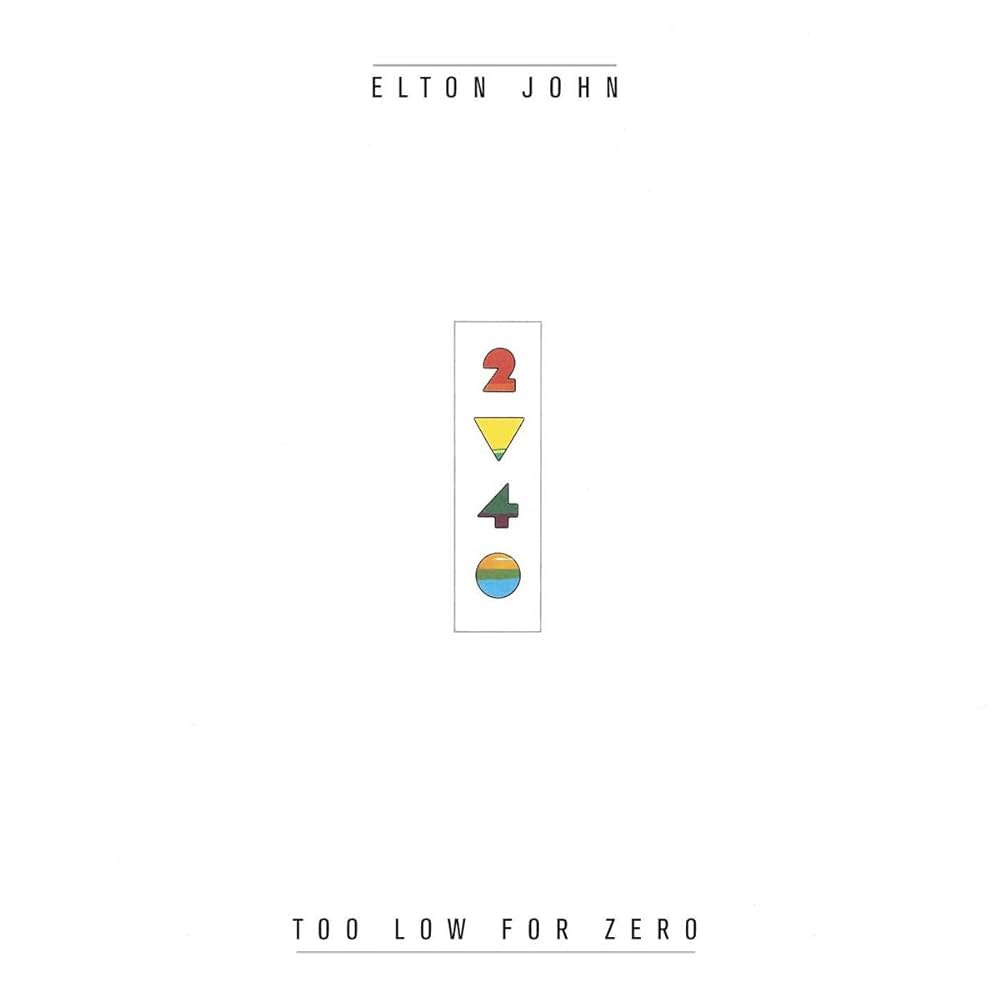
Although they’d worked together sporadically since 1976, Too Low Zero was John and Taupin’s first time writing an entire album together in seven years. One of those songs happened to be the ideal theme song for a comeback, “I’m Still Standing,” and it followed his return to the Top 10 with “I Guess That’s Why They Call It the Blues.” John never sounded as comfortable making music with synthesizers as he does with pianos, but Too Low For Zero’s title track and “Crystal” are some of his best synth-pop efforts.
11. The Union with Leon Russell (2010)
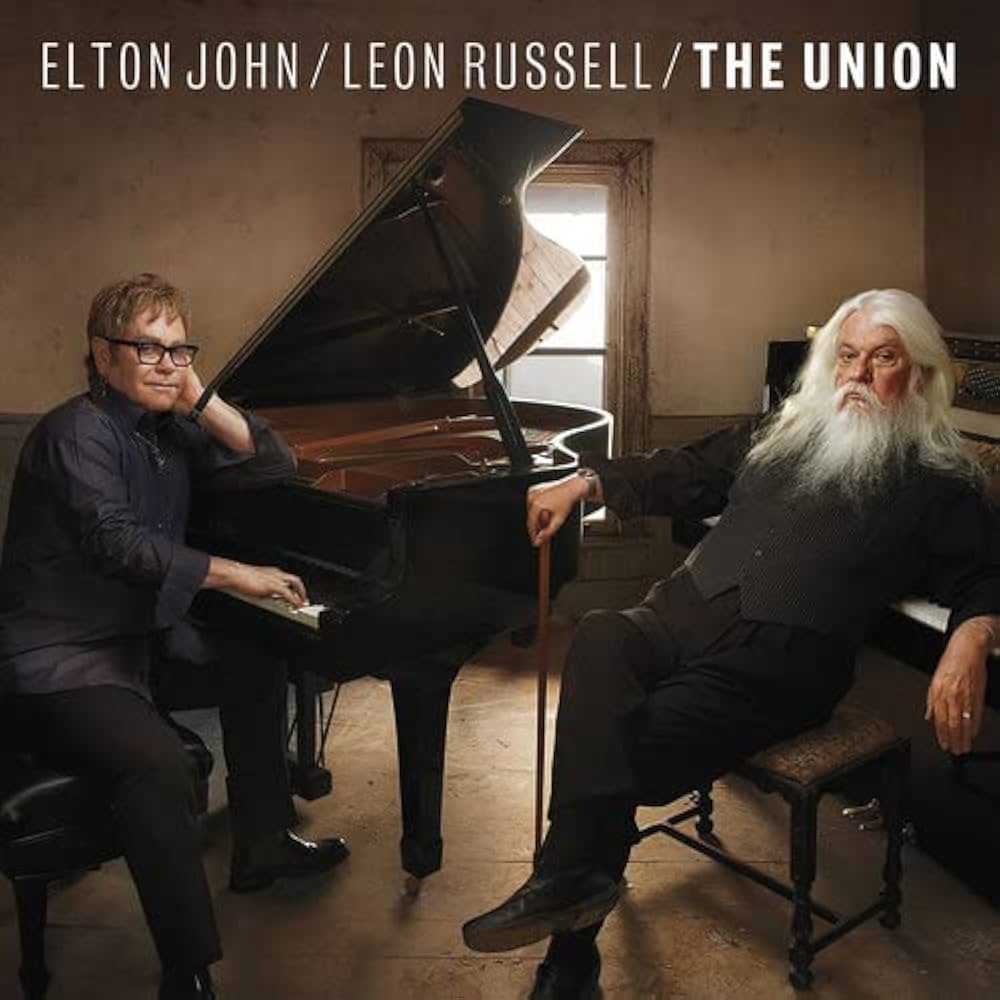
In the years before Elton John’s breakthrough, the raspy-voiced Tulsa native Leon Russell was the pop scene’s preeminent piano man, recording a string of hit solo albums and penning widely covered songs like “A Song for You” and “Superstar.” For his first album-length collaboration with another singer, John wrote a set of bluesy new songs with Russell, with another legend, Neil Young, joining them on “Gone to Shiloh.” With T Bone Burnett on production and a band including Jim Keltner, Booker T. Jones, and Marc Ribot, The Union is one of the best sounding albums John has ever made, the culmination of decades of friendship and mutual respect. It was also a Top 10 hit on the Billboard 200 and a last hurrah for Russell, who hadn’t charted in decades and would pass away in 2016.
10. Blue Moves (1976)
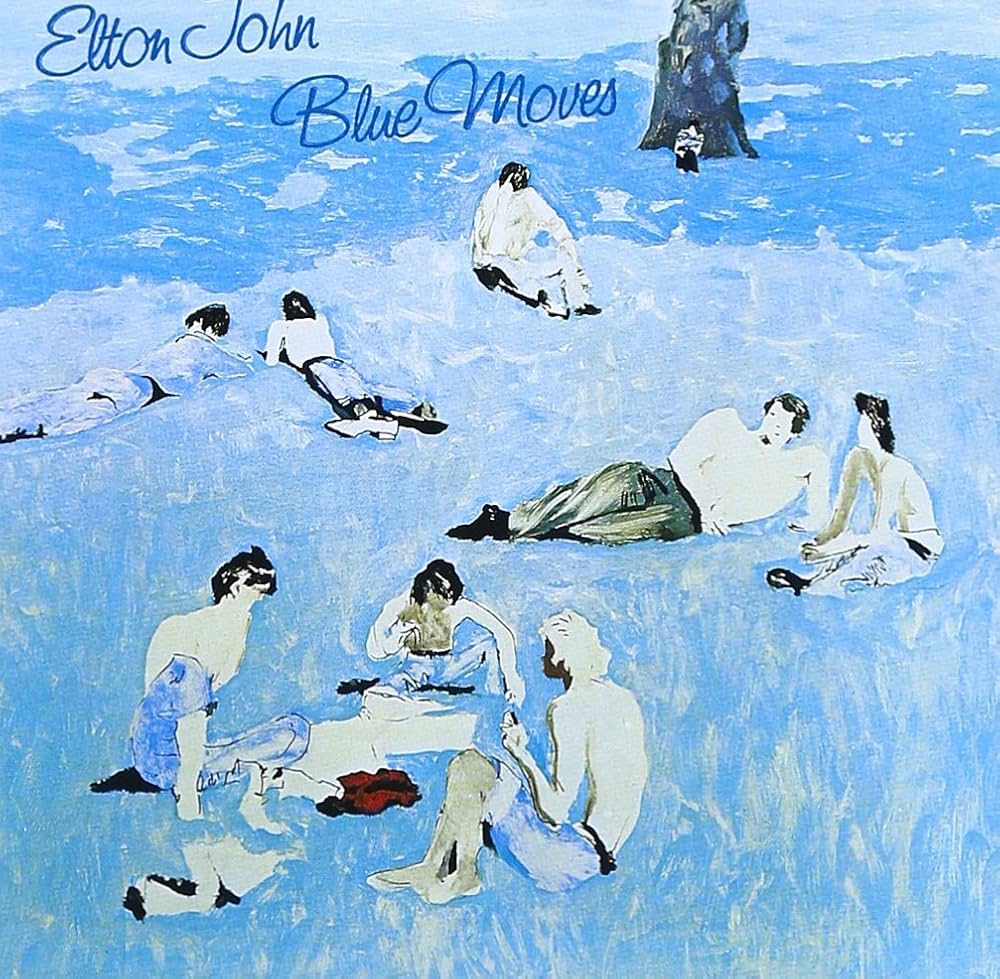
You don’t hear Elton John’s voice until a few minutes into the second track of Blue Moves, his longest and perhaps most ambitious album. Although “Sorry Seems to Be the Hardest Word” was a hit and the album quickly went Platinum, it marked the end of John’s imperial phase, and the last time he’d work with Taupin or Dudgeon for years as he took a break from touring and started trying out other collaborators. John also came out as bisexual in a Rolling Stone interview the month the album was released, which possibly played a role in his commercial decline at a time when few major celebrities were out of the closet in any capacity. At 84 minutes, Blue Moves is an unwieldy album full of long, complex songs and jazzy instrumentals, but there are great underrated tracks like “Between Seventeen and Twenty” that make it worth exploring.
9. The Diving Board (2013)
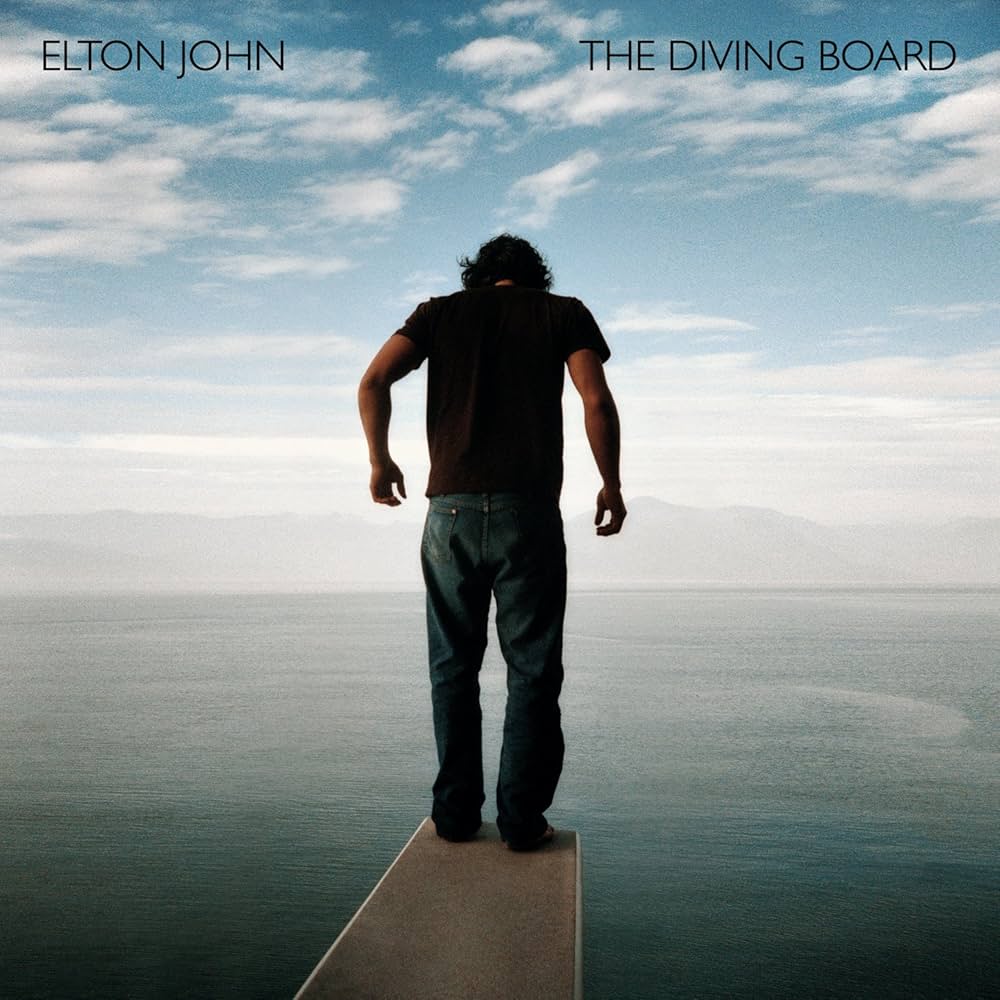
Although there is some guitar on a couple songs and horns on a couple others, The Diving Board is the closest Elton John has come to making a really stripped down piano/bass/drums record since the early ‘70s. Instead of longtime members of the Elton John Band, the rhythm section for most of the album is drummer Jay Bellerose (Aimee Mann, Regina Spektor) and bassist Raphael Saadiq (D’Angelo, Tony! Toni! Tone!), who provide supple grooves for gently bouncy tracks like “The Ballad of Blind Tom” and “Oscar Wilde Gets Out.” Last year I interviewed Saadiq for Stereogum, and he recounted some memories of working with John: “It was a great experience to watch him, y’know, walk in the studio every day with lyrics from [Bernie Taupin], and he would just go to the piano and he would work it out.”
8. Elton John (1970)
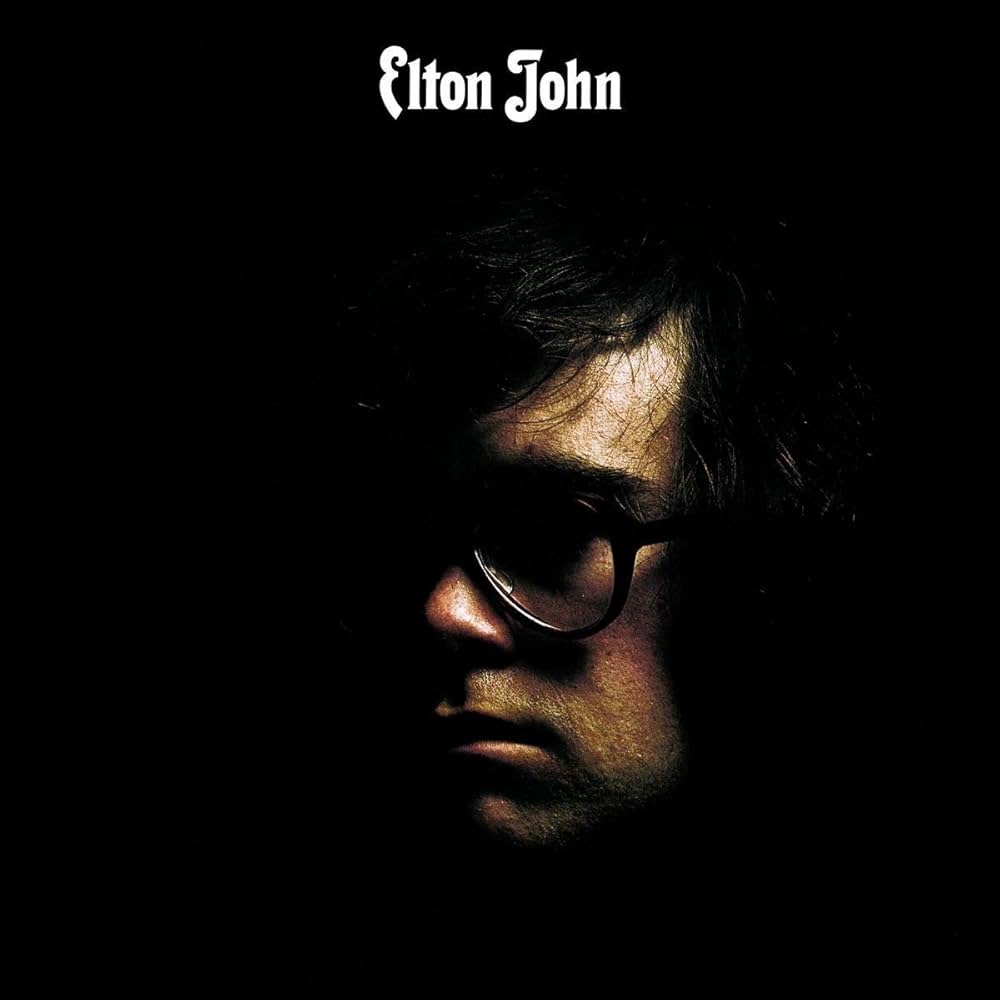
Tony Visconti produced every song on David Bowie’s 1969 self-titled album except a “novelty tune” he saw little potential in and delegated to another producer, Gus Dudgeon. “Space Oddity” helped launch Bowie’s career, though, and one person who loved the song, Elton John, hired Dudgeon to produce his next ten wildly successful albums. Elton John is a massive leap forward from Empty Sky, with John and Taupin finding the expressive sound that would turn them into permanent chart fixtures on “Your Song,” “Border Song,” and “Take Me to the Pilot.”
7. Don’t Shoot Me I’m Only the Piano Player (1973)
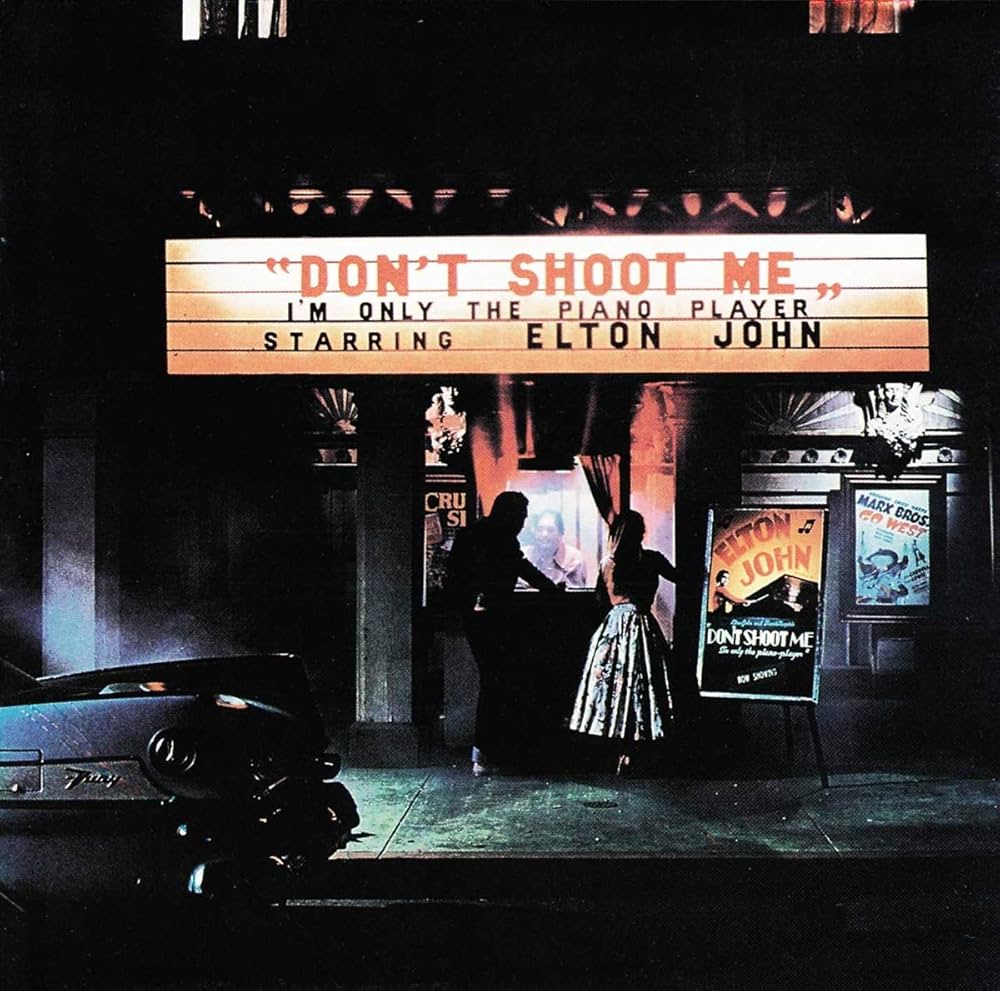
Everyone’s got at least one omnipresent Elton John hit they could do without ever hearing again, and for me, it’s “Crocodile Rock.” Even with that strike against it, though, Don’t Shoot Me I’m Only the Piano Player is stacked with great piano pop numbers like “Elderberry Wine” and “Teacher I Need You.” It’s also Johnstone’s best showcase as a utility player, as he switches between acoustic and electric guitars, mandolin, banjo, and even sitar to give each song a distinct texture.
6. Caribou (1974)

Chicago’s manager and producer James William Guercio purchased Caribou Ranch in rural Colorado in 1972, and converted a barn into a state-of-the-art studio where some of the biggest albums of the decade were made. Elton John recorded three albums there, naming the first one after the studio (Earth, Wind & Fire also released a song named “Caribou” in 1974 that was recorded at Caribou Ranch). Caribou was also one of the three Elton John albums that have been nominated for the Grammy for Album of the Year, and it isn’t as revered today as the others, Elton John and Captain Fantastic. But it contains a couple of classic singles and a wide range of Taupin lyrics that ponder aliens (“I’ve Seen the Saucers”), describe a mass shooting (“Ticking”), and taunt the listener with incomprehensible nonsense (“Solar Prestige a Gammon”).
5. Honky Chateau (1972)
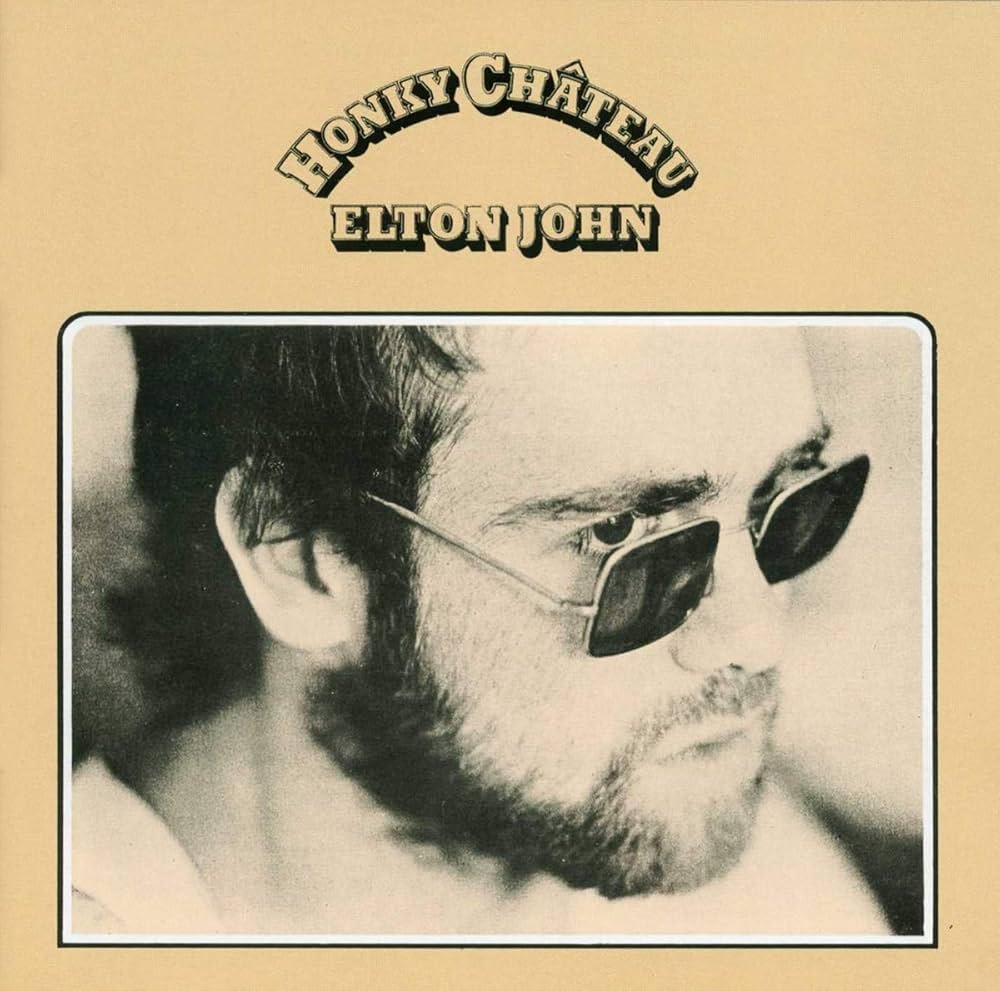
Over the course of Elton John’s first five albums, he gradually brought together the supporting cast that would help him reach superstardom. He added the final piece of the puzzle on Honky Chateau, bringing his touring band of Olsson, Murray, and Johnstone into the studio in favor of session musicians. From the rhythm section’s New Orleans funk on “Honky Cat” to Johnstone’s fantastic solo on “Susie (Dramas)” and the trio’s vocal harmonies on “Rocket Man,” the band’s road-tested chemistry immediately began to enrich John’s albums. “Bernie Taupin has settled into some comprehensible (even sharp and surprising) lyrics, and John’s piano, tinged with the music hall, is a rocker’s delight,” Robert Christgau wrote in the Village Voice review of Honky Chateau.
4. Captain Fantastic and the Brown Dirt Cowboy (1975)
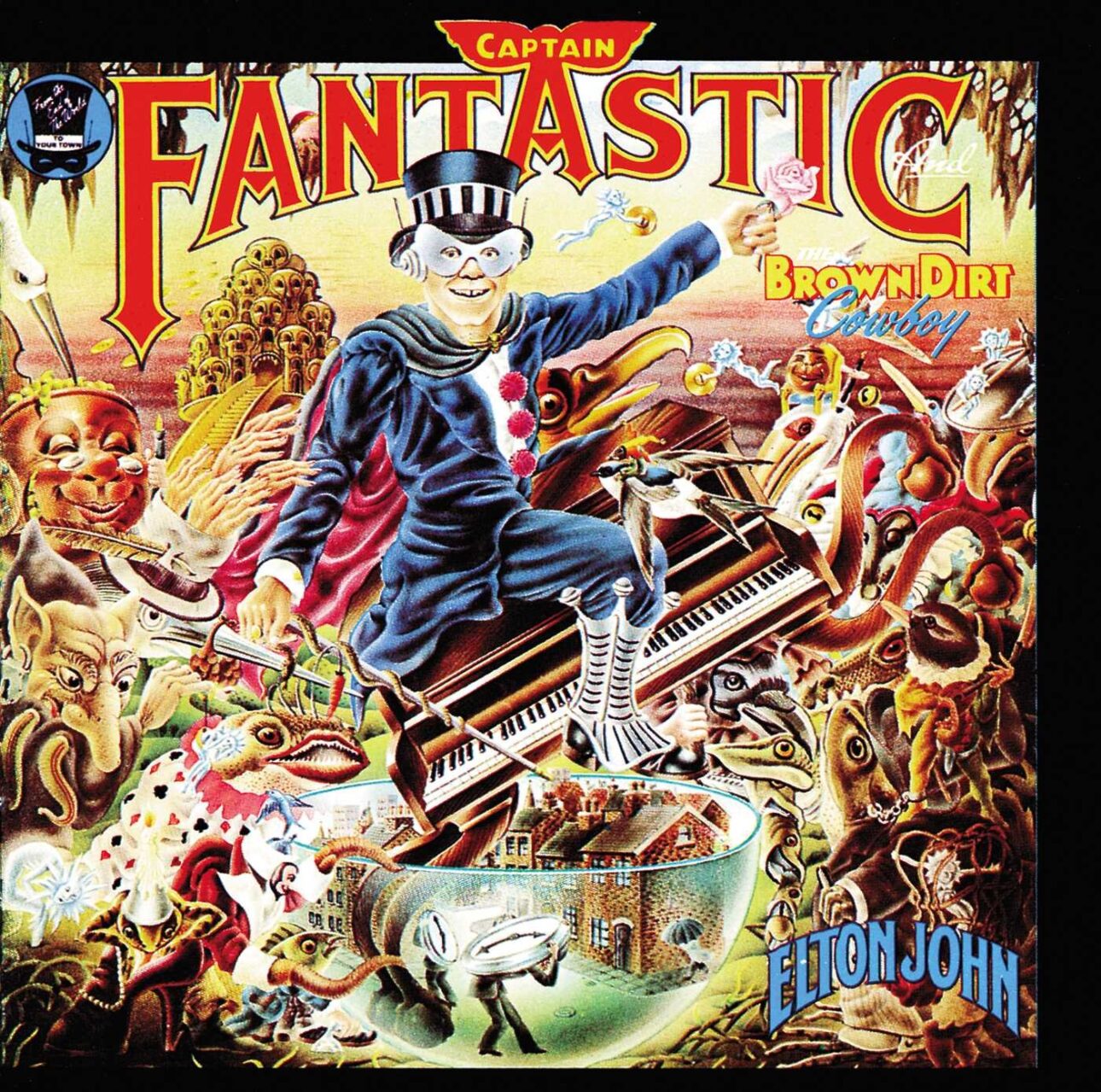
The John/Taupin writing partnership is unique and fascinating because Taupin’s lyrics are often autobiographical but also take inspiration from John’s life as well, sometimes intermingling their stories or fusing their perspectives into one. That dynamic was never more explicit than on Captain Fantastic and the Brown Dirt Cowboy, a concept album about the duo’s early days working together in the late ‘60s. It sold over a million copies in a matter of days and was the first album to ever debut at No. 1 on the Billboard 200 (Rock of the Westies was the second a few months later). John was so popular that he insisted the album’s only single “Someone Saved My Life Tonight,” inspired by his 1968 suicide attempt, be played at its full length of 6 minutes and 45 seconds without a single edit, and radio stations readily complied.
3. Tumbleweed Connection (1970)
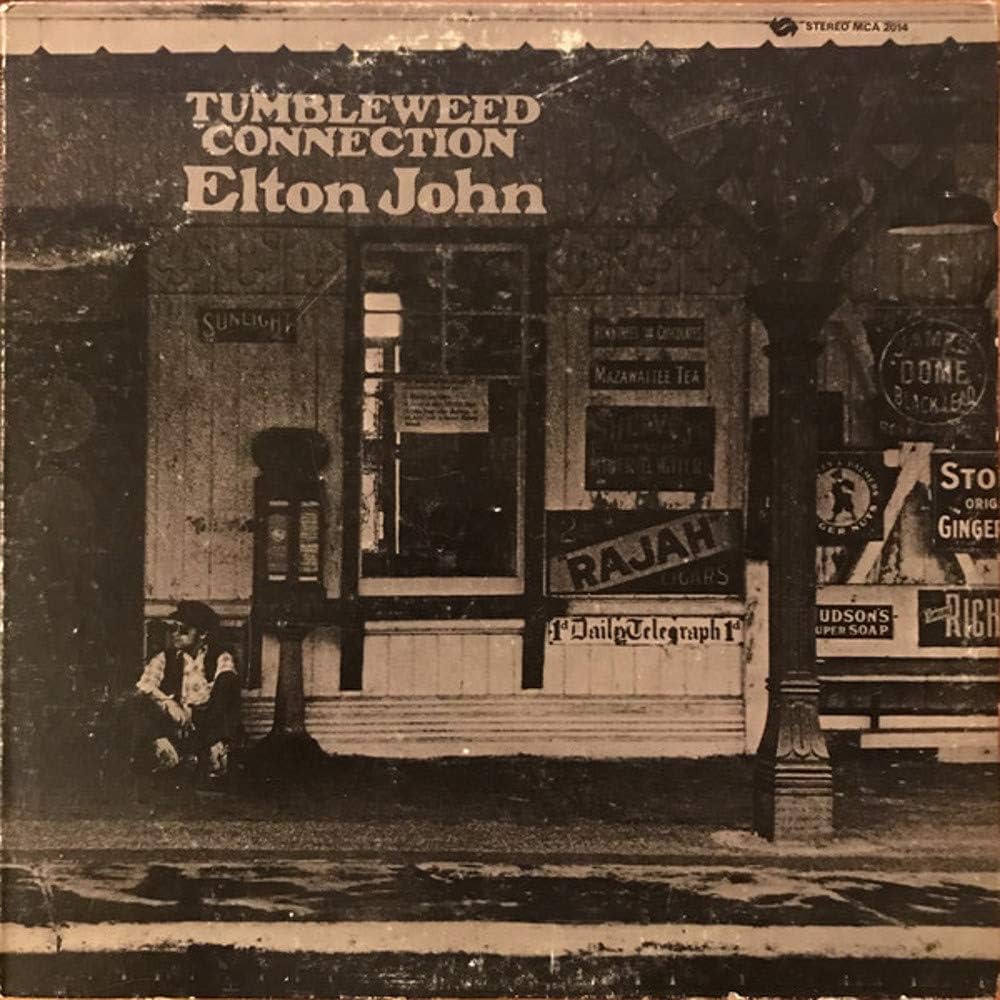
In 1971, Elton John became the first artist since the Beatles to land four albums simultaneously in the top half of the Billboard 200: his self-titled album, Tumbleweed Connection, the Friends soundtrack and the live recording 11-17-70. Surprisingly, it was the Americana-themed concept album with no hit singles that ultimately became the only one of that quartet to sell a million copies. Drawing inspiration from westerns and records by The Band and Delaney & Bonnie, John and Taupin wrote Tumbleweed Connection about the America that existed in their imagination before they’d ever flown across the Atlantic to experience it firsthand. “Amoreena” was used memorably in the opening sequence of Sidney Lumet’s Dog Day Afternoon a few years later.
2. Madman Across the Water (1971)

Paul Buckmaster, who died in 2017, arranged strings for a wide variety of classics by David Bowie, the Rolling Stones, Harry Nilsson, and Carly Simon, among others. But Buckmaster, whose first instrument was cello, most frequently did great work with Elton John, and Madman Across the Water is his finest hour. It’s hard to imagine “Tiny Dancer,” “Levon,” or the title track having the same emotional impact without the dramatic strings that seem to glide in and out of the mix in conversation with John’s voice. “Indian Sunset” has long been John’s favorite deep cut to perform live, winning over casual fans with his enthusiasm for the narrative epic. “Madman is a difficult, sometimes impossibly dense record,” Alec Dubro wrote in the Rolling Stone review of the album.
1. Goodbye Yellow Brick Road (1973)
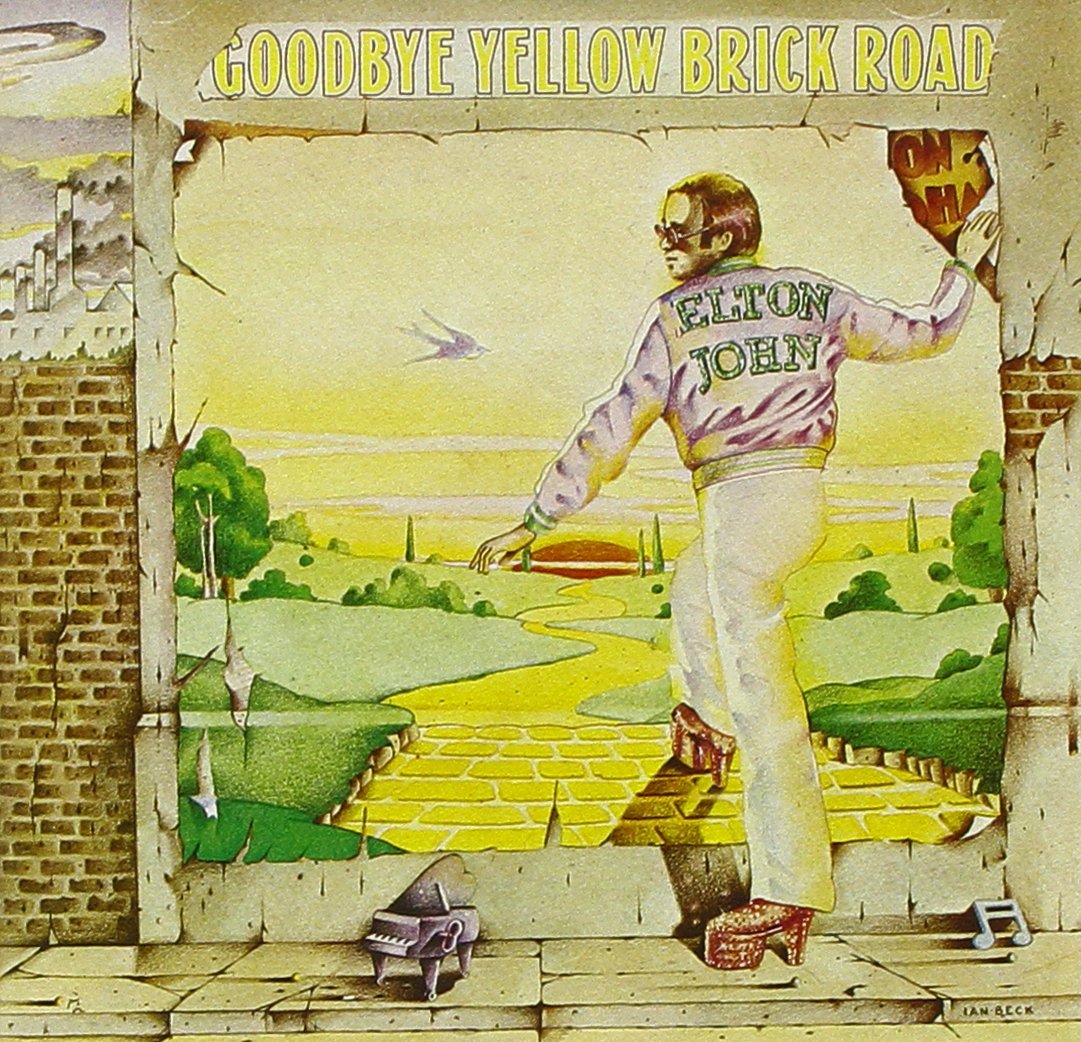
Elton John was at the forefront of the singer-songwriter movement of the early ‘70s, but with Goodbye Yellow Brick Road, he set himself apart from the mellower likes of Carole King and James Taylor and became a bona fide rock star. With the ultimate classic rock power move of a hit-filled double LP, John crossed over to the R&B charts with “Bennie and the Jets,” gave good glam on “Saturday Night’s Alright for Fighting,” and gifted AOR radio with an epic late night staple in the 11-minute opener “Funeral for a Friend/Love Lies Bleeding.” The title track and “Candle in the Wind” reaffirmed that he was forever and always a great balladeer, but Goodbye Yellow Brick Road completed Reg Dwight’s transformation from a charming young singer into a piano-pounding master showman in the tradition of Little Richard and Jerry Lee Lewis.
To see our running list of the top 100 greatest rock stars of all time, click here.
